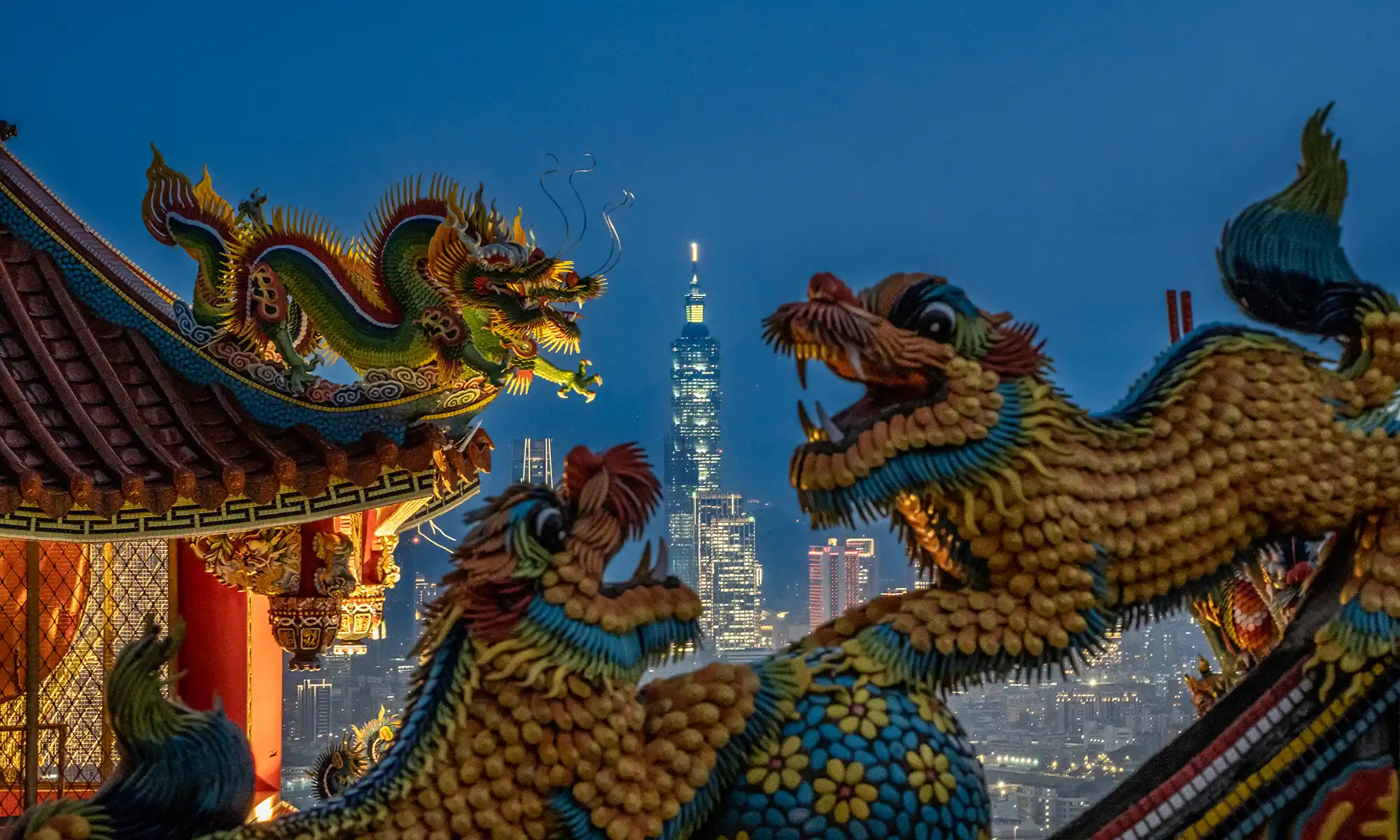An Insider’s Guide to Taipei: Temples
Taiwan stands out as one of the world’s most religiously diverse countries, and its capital, Taipei, is brimming with various religious institutions. Among them, Buddhist and Taoist temples are particularly captivating, with many of these temples venerating a blend of deities from both traditions.
A visit to the historic and bustling Bangka Longshan Temple is a must—as the quintessential “urban temple”, it offers a glimpse into the integration of tradition into city life. We also recommend exploring mountainside temples such as Bishanyan Kaizhang Shengwang Temple and Hongludi Nanshan Fude Temple which are located on the hills surrounding Taipei and offer breathtaking vistas of the metropolis below.
For an even more profound experience, consider visiting the tranquil Dharma Drum Mountain Nung Chan Monastery, which stands isolated from the surrounded metropolis by farm fields, or the absolutely gargantuan Zhulin Mountain Buddhist Temple.
Bangka Longshan Temple
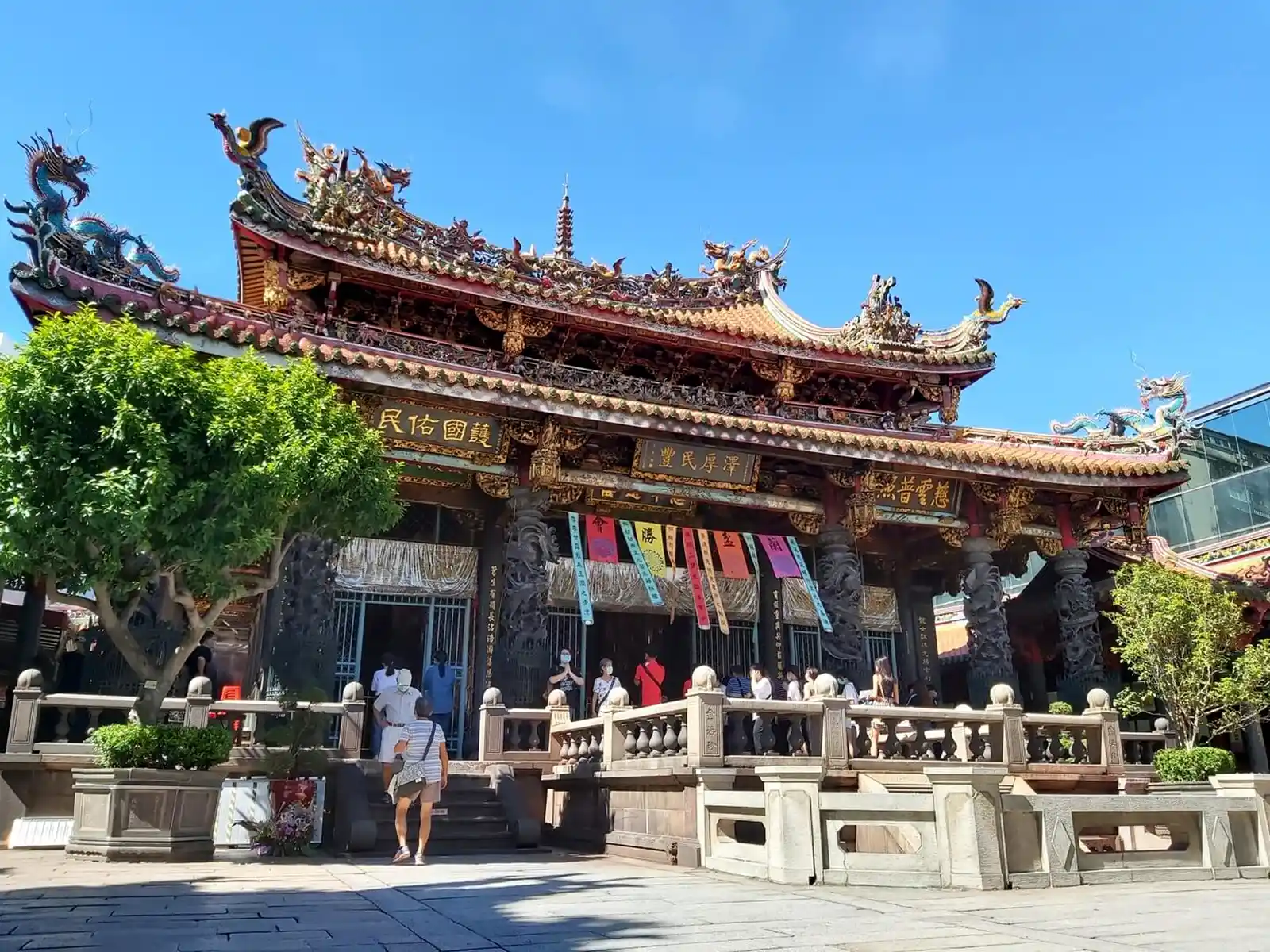
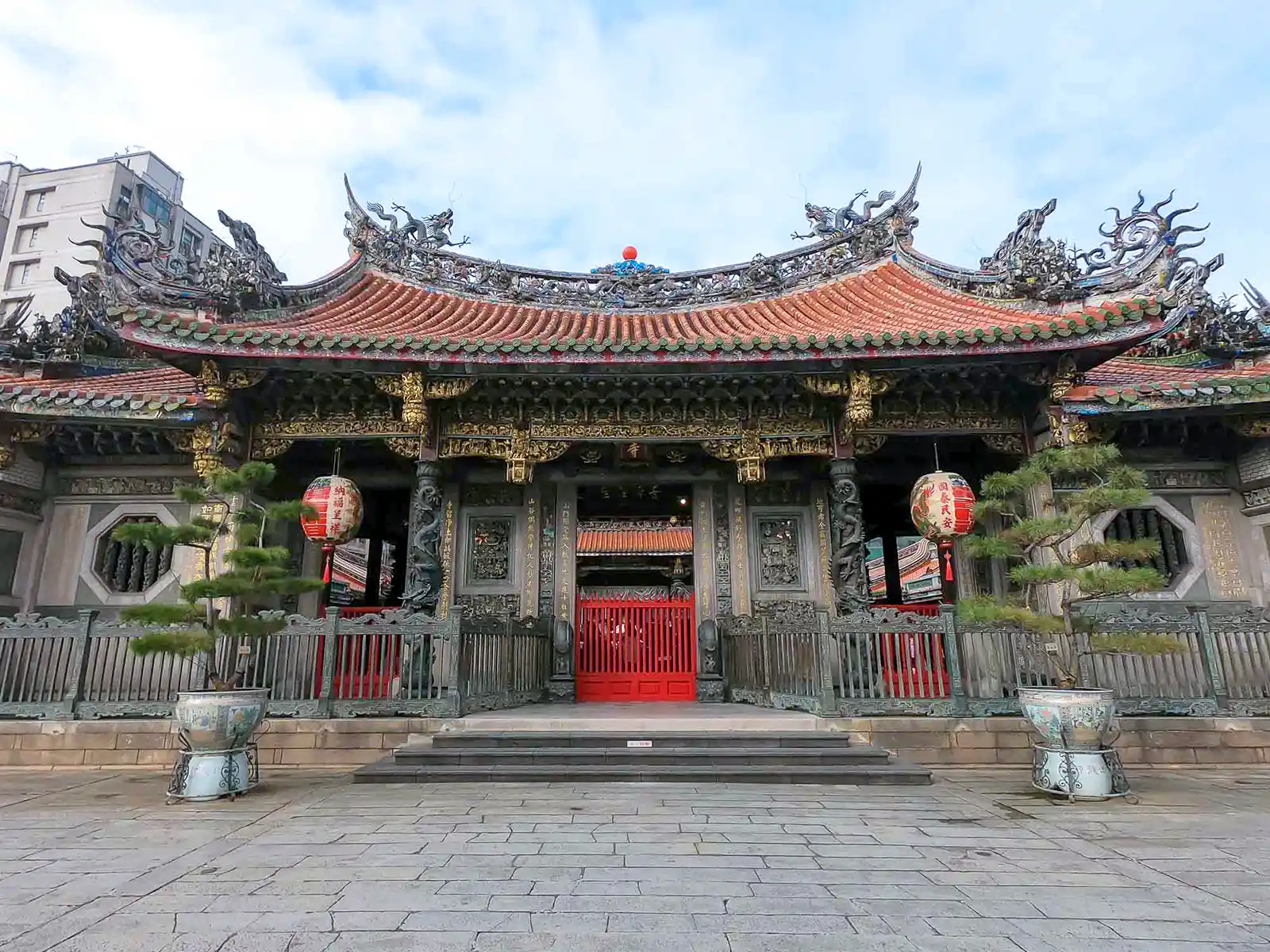
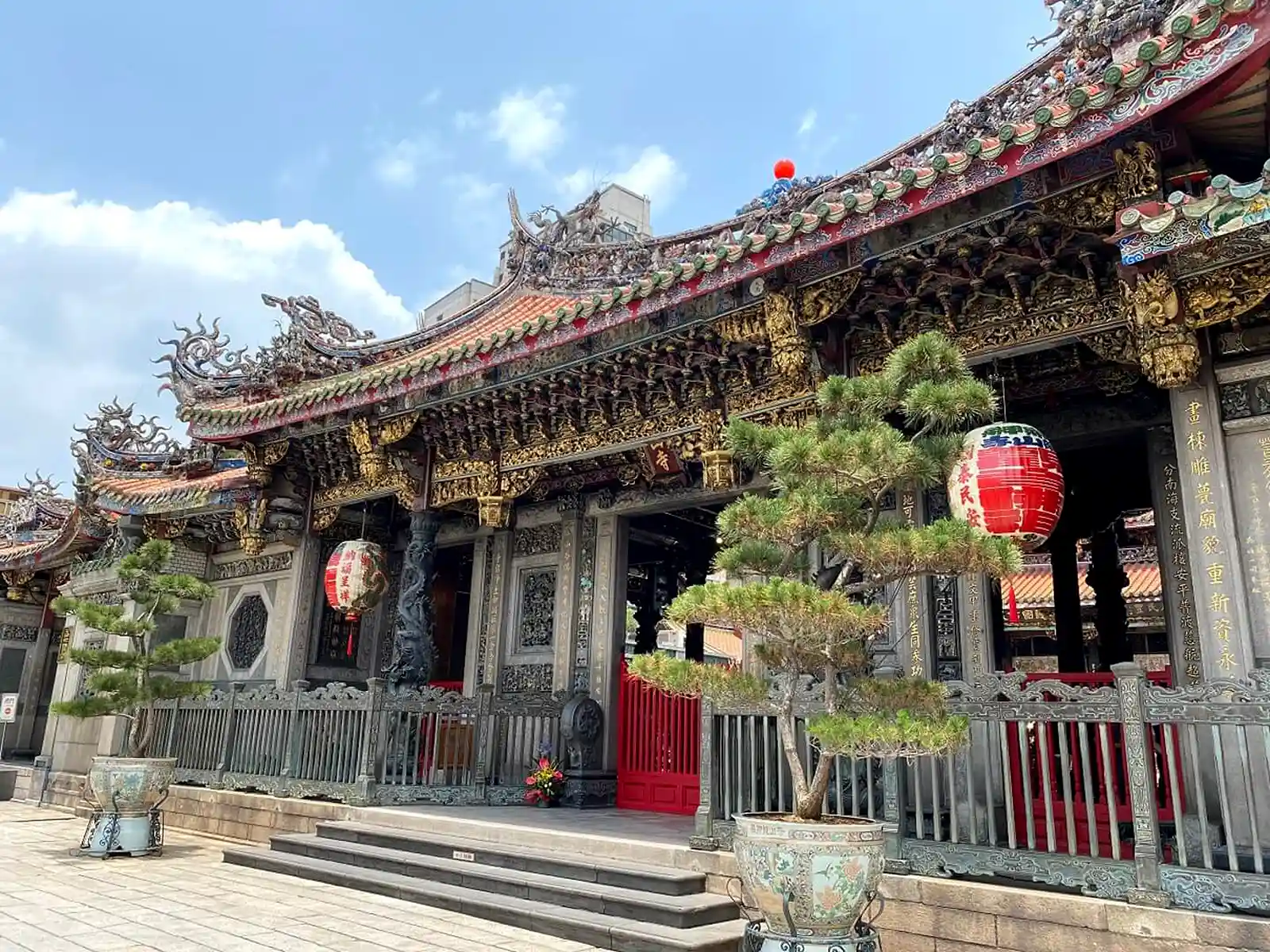
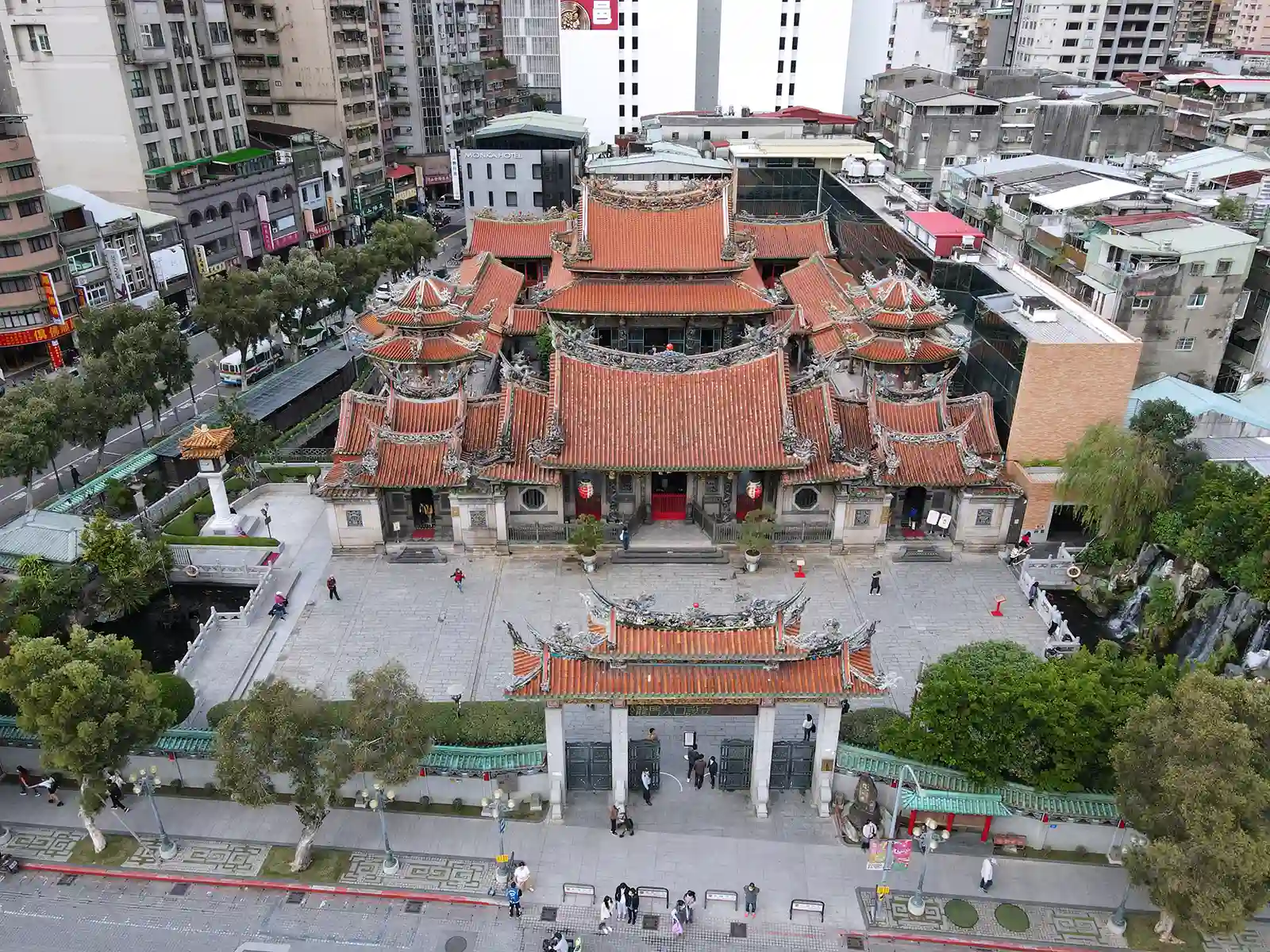
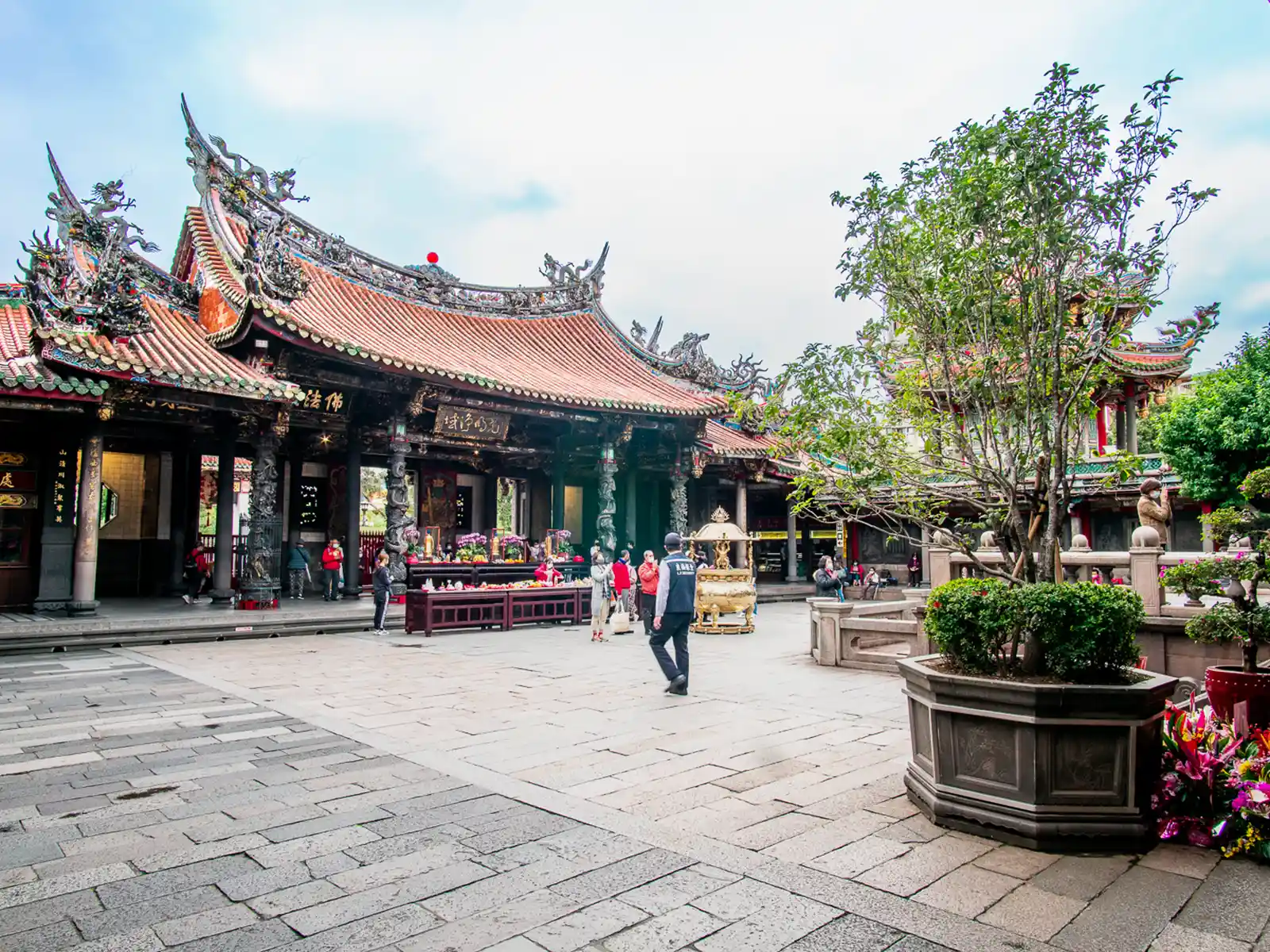
Bangka Longshan Temple, situated in the historic district of Wanhua, ranks among Taipei’s most significant and ancient religious sites. It is designated as a second-grade national historic site.
The temple was originally founded in 1738 during the Qing Dynasty, but was reconstructed once in 1919, and required further renovations following damage sustained during World War II. Notably, despite severe damage inflicted by an Allied bombing raid on several temple buildings, the statue of Guanyin, situated at the center of it all, miraculously remained unscathed.
Like all Longshan Temples, Bangka Longshan Temple primarily venerates the Buddhist Goddess of Compassion, Guanyin. However, as is typical in Taiwan, the temple also houses statues and effigies of numerous other Buddhist and Taoist deities within its halls. The rear hall, in particular, pays homage to the sea goddess Mazu, as well as deities associated with literature and Lord Kuan, the god of war.
The surrounding neighborhood of Wanhua is rich with traditional culture. Nearby, Huaxi St. Night Market is renowned for its vendors specializing in snake-derived products, including drinkable snake blood. Additionally, the Longshan Temple Underground Shopping Bazaar, situated beneath the park opposite the temple, hosts numerous fortune tellers, some of whom offer divination services in English, indicated by “English spoken here” signs.
Visit the temple’s official website for more information.
Insider’s Tip: If Bangka Longshan Temple is interesting to you, consider including Taiwan’s most famous Longshan Temple, Lukang Longshan Temple as well.
Songshan Ciyou Temple
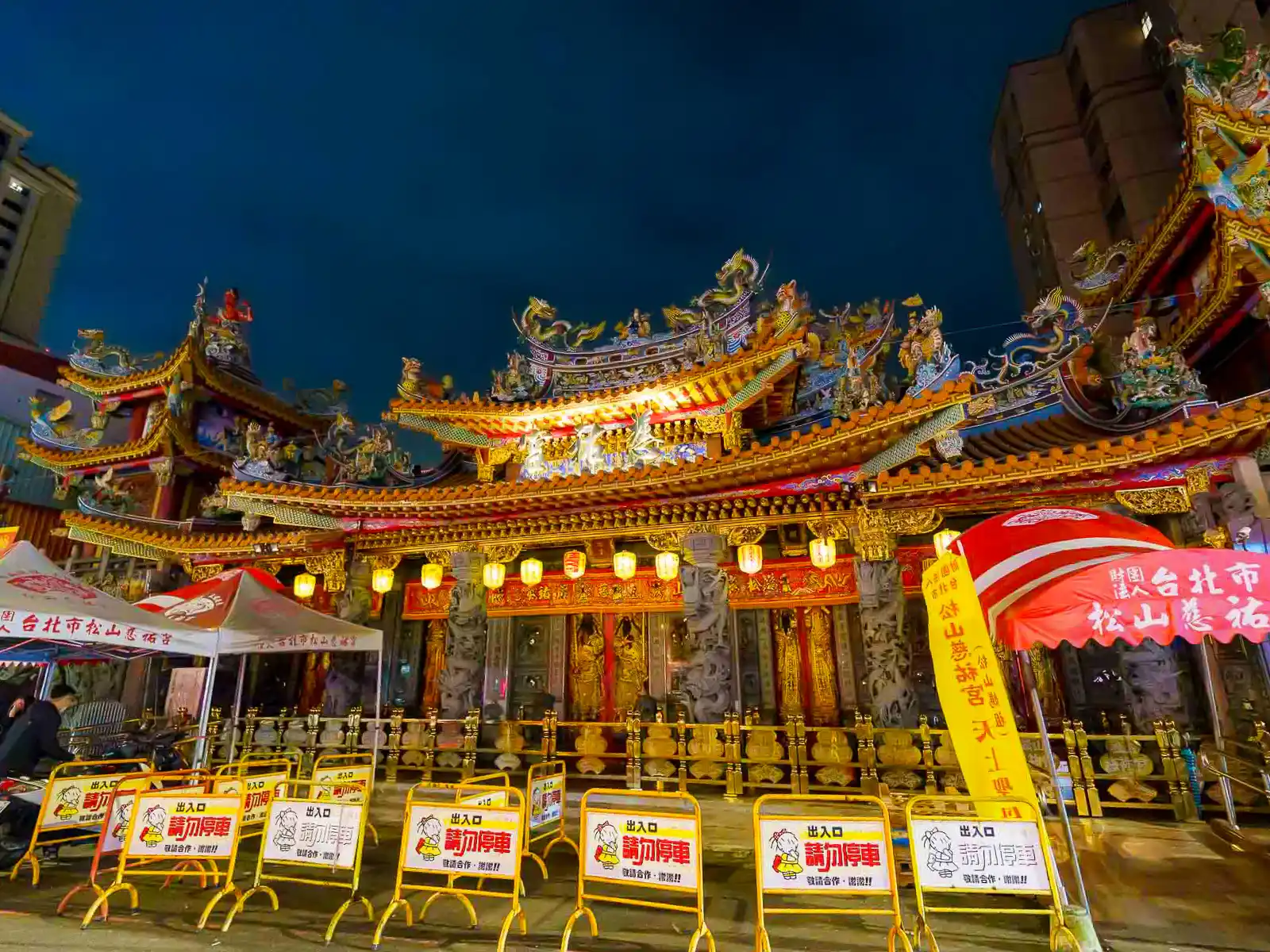
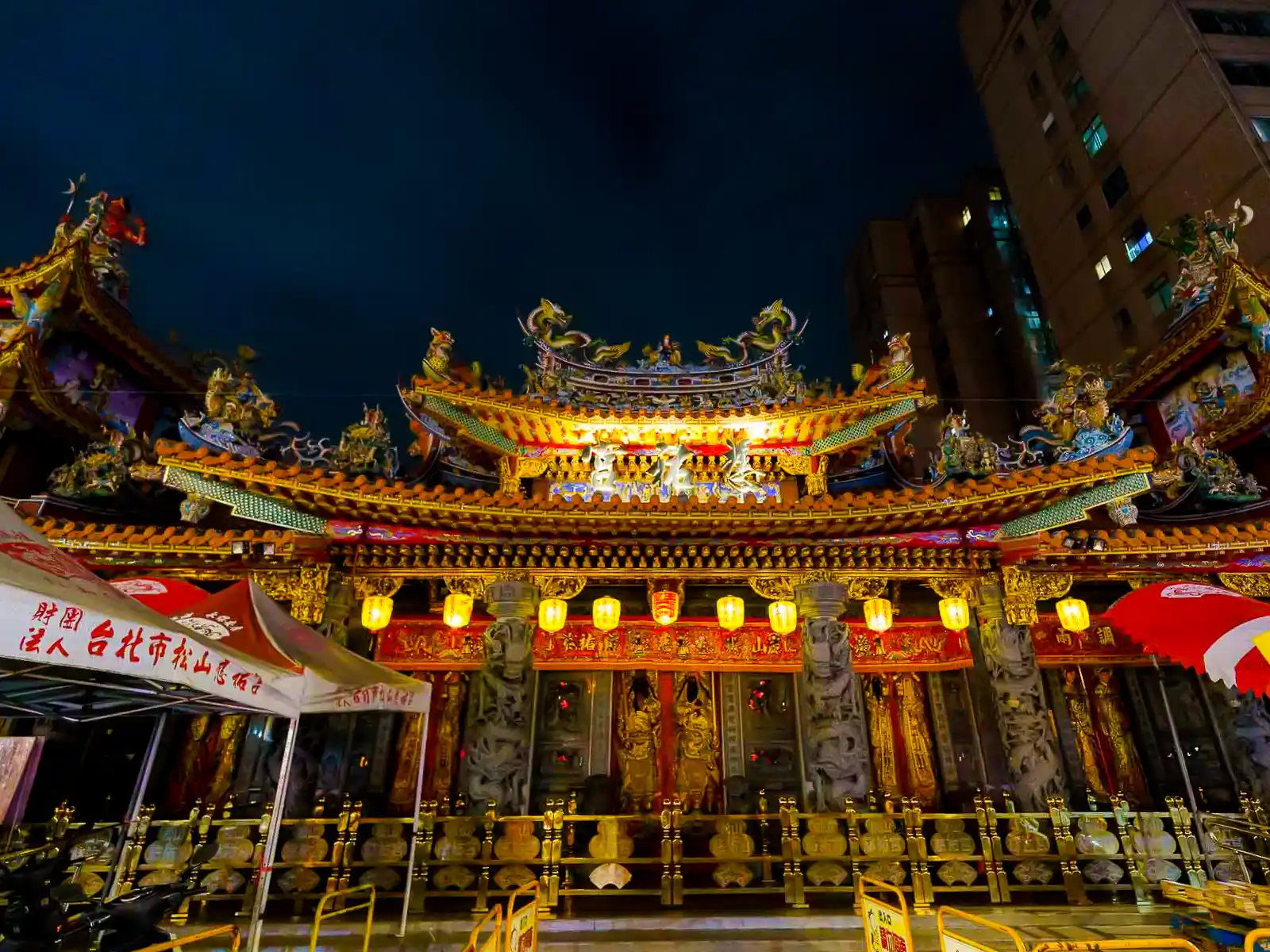
Songshan Ciyou Temple, situated at the eastern entrance of Taipei’s renowned Raohe Night Market, is a lavishly adorned temple dedicated to the sea goddess Mazu.
Constructed in the mid-18th century, this temple boasts exquisite roof carvings adorned with human figures, most notably featuring twin flying dragons believed to possess the power to ward off fires.
In keeping with the tradition of many temples, Songshan Ciyou Temple pays homage to multiple deities within its hallowed halls. The popular Earth God is prominently placed at the side altar to the right of Mazu, while the altar on the left is dedicated to Zhusheng Niang-niang, the Goddess of Birth. Of particular note, the intricately carved stone lions housed within the main hall date back to 1803, and have stood on display for two centuries.
Insider’s Tip: Combine your visit to Songshan Ciyou Temple with a trip to Raohe Night Market, one of our top 5 night markets in Taiwan).
Bishanyan Kaizhang Shengwang Temple
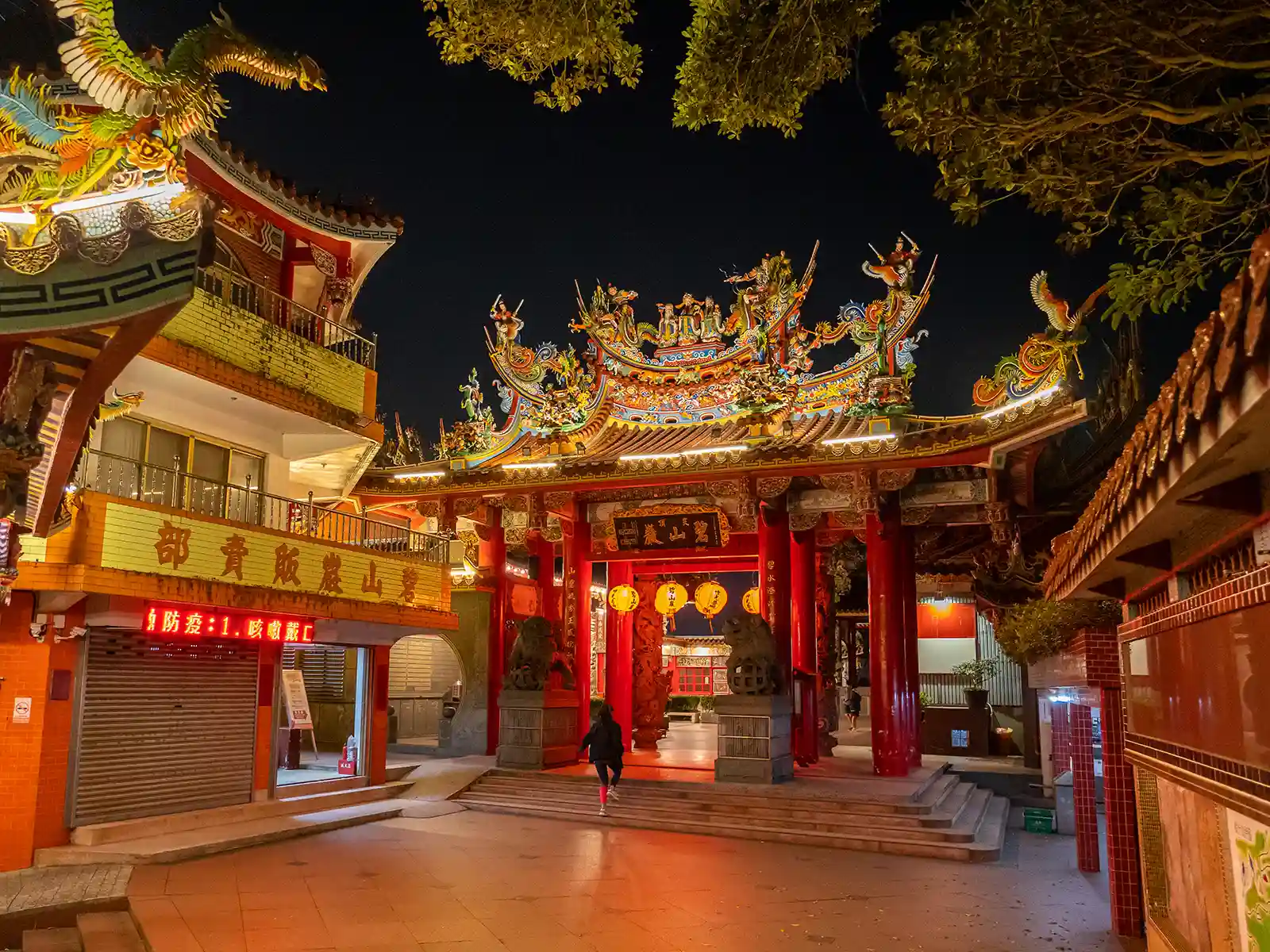
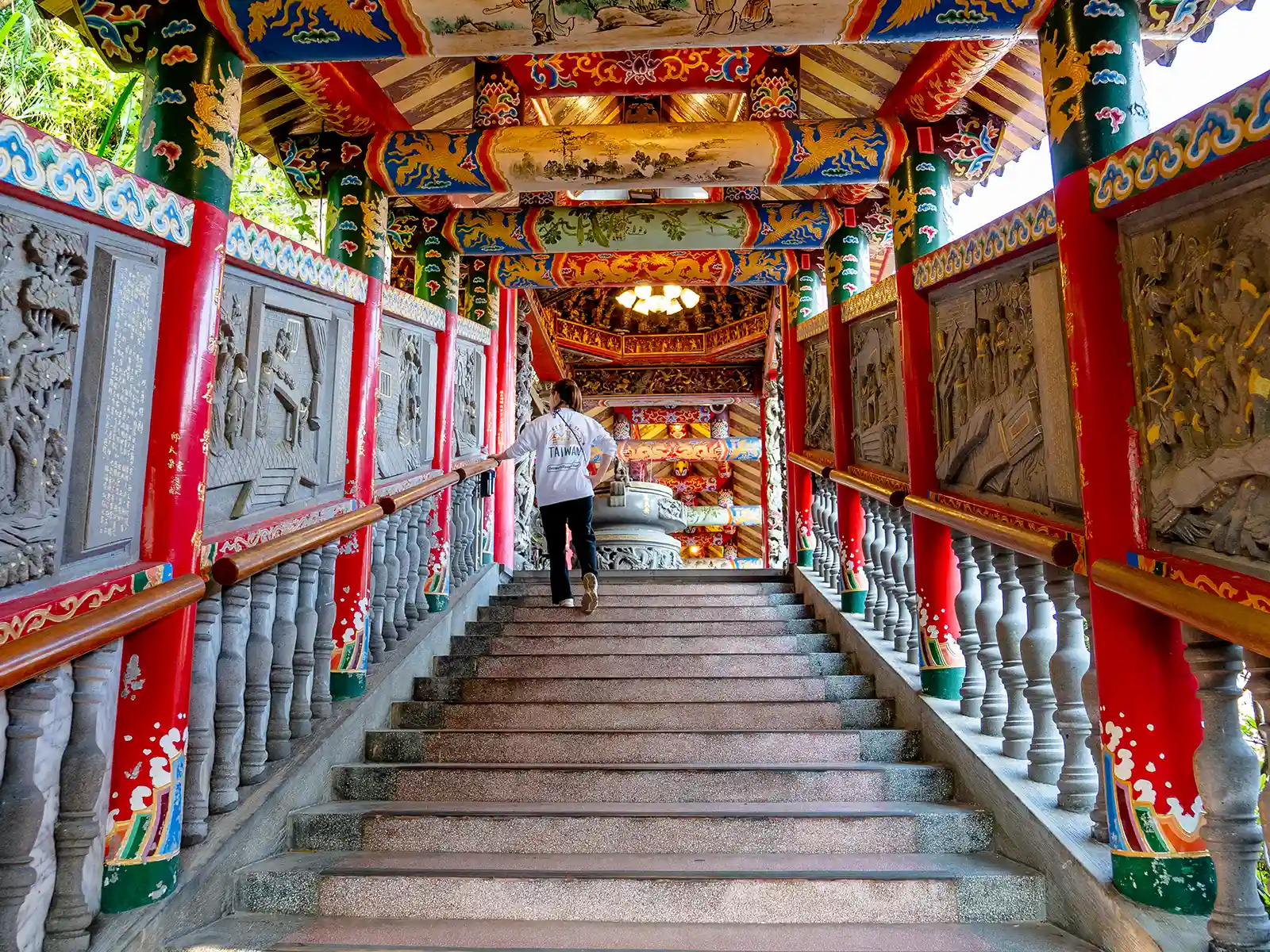
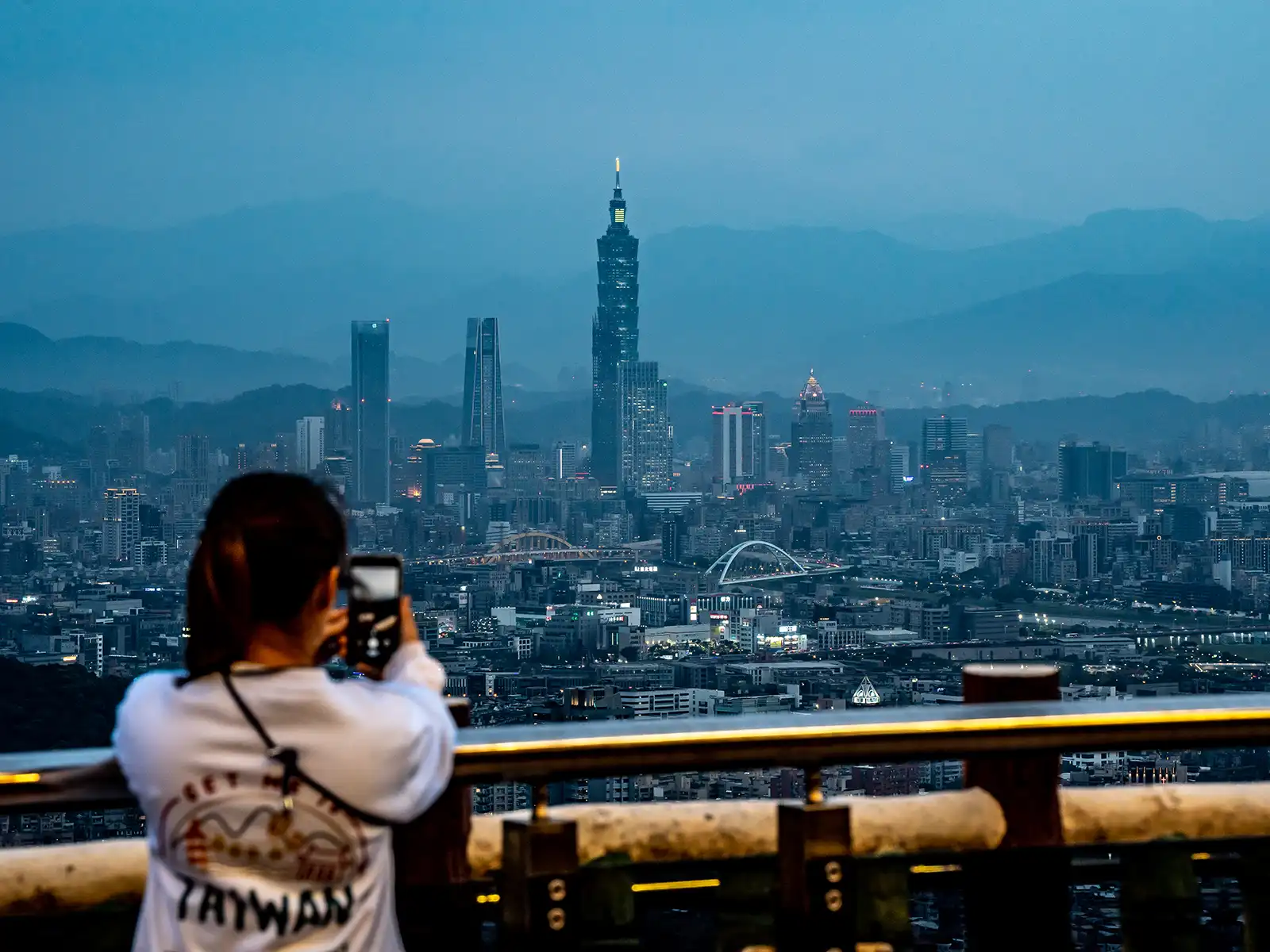
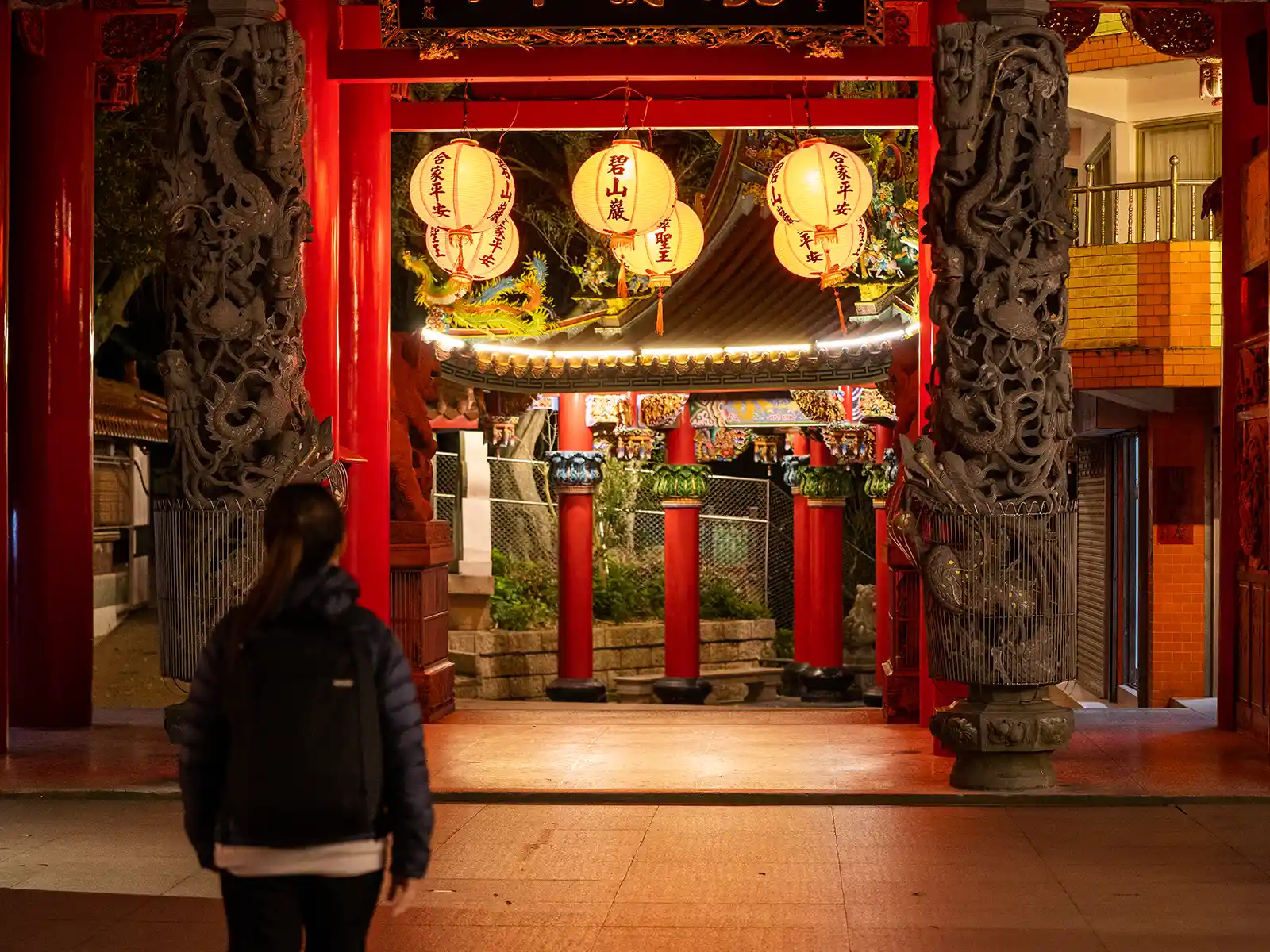
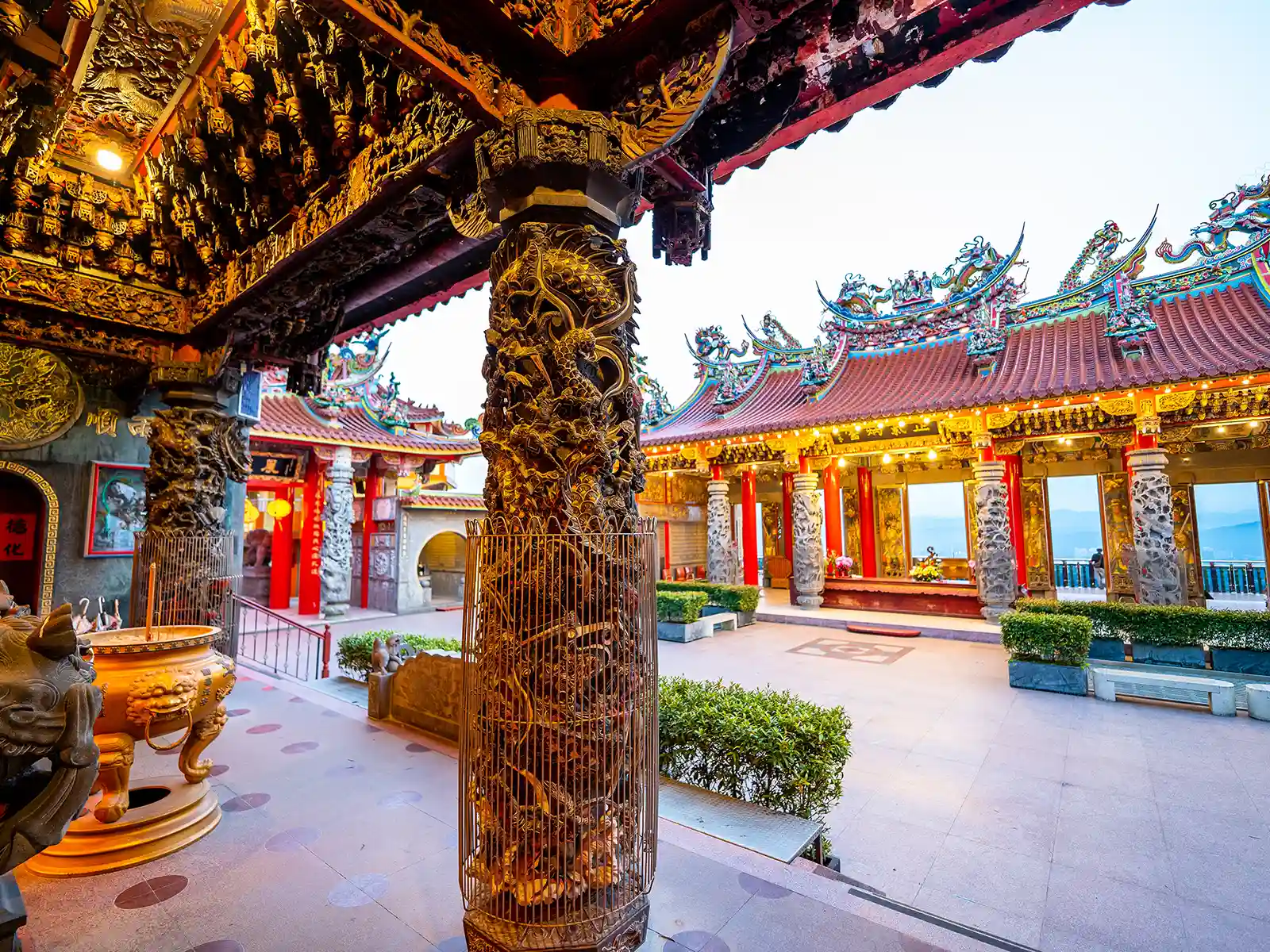

The Bishanyan Kaizhang Shengwang Temple, commonly referred to as “Bishan Temple”, stands as a splendid mountainside temple dedicated to the revered folk deity known as Kaizhang Sheng Wang. This temple earns a place among our top 5 temples in Taiwan due to its breathtaking views of the Taipei Basin, offering unique photographic opportunities.
Perched atop Bishan Mountain, Bishan Temple is now recognized as the largest temple in Taiwan devoted to Kaizhang Sheng Wang. Its origins trace back to a humble shrine established to express gratitude for Kaizhang’s protection against bandits. Over time, the temple underwent gradual renovations and expansions, evolving into the vibrant multi-floor complex it is today.
The temple’s ground floor includes a cozy coffee shop, providing an ideal spot to relax and savor panoramic views of the Taipei Basin below. While the spectacular vista may be the primary draw for many visitors, exploring the temple’s main hall and its colorful covered stairs is a must. The temple’s remarkable stone craftsmanship and vibrant decorations are truly awe-inspiring.
Within the main hall, five separate shrines pay homage to various deities, including the Jade Emperor, the Earth God, Kaizhang Sheng Wang and his two generals, General Lee and General Ma, the Tai Sui Generals, and the God of Literature, among others. Bishan Temple offers a captivating blend of natural beauty and cultural richness.
Insider’s Tip: Arrive in the late afternoon to beat the heat and then stay for the sunset view. The temple overlooks Taipei 101 and Xinyi District. There are multiple locations where it’s possible to snap a postcard-quality photo of the evening glow, but our personal favorite showcases two magnificent dragons with a view of Taipei 101. Have a look at our photo above for reference.
Dharma Drum Mountain Nung Chan Monastery
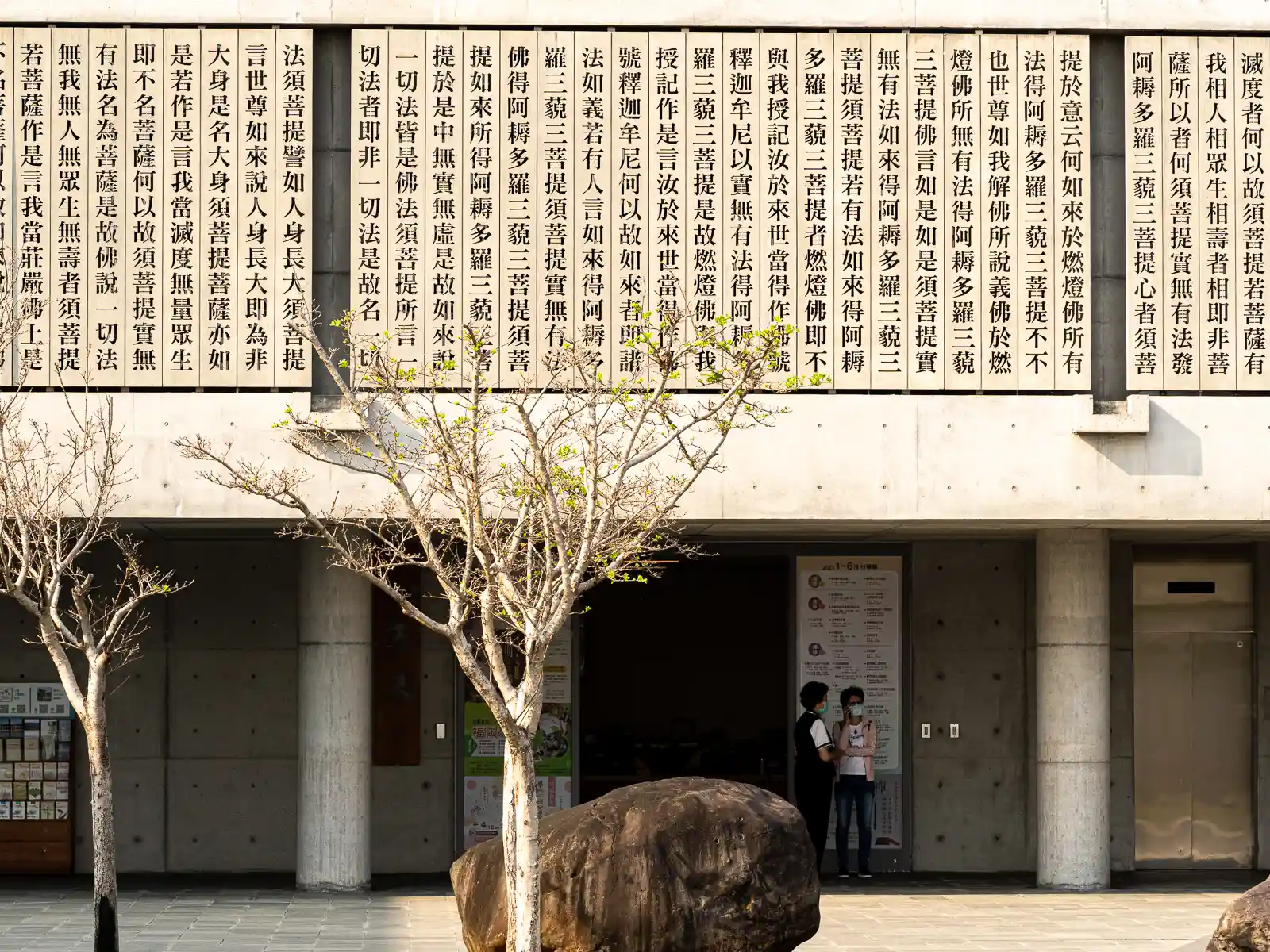
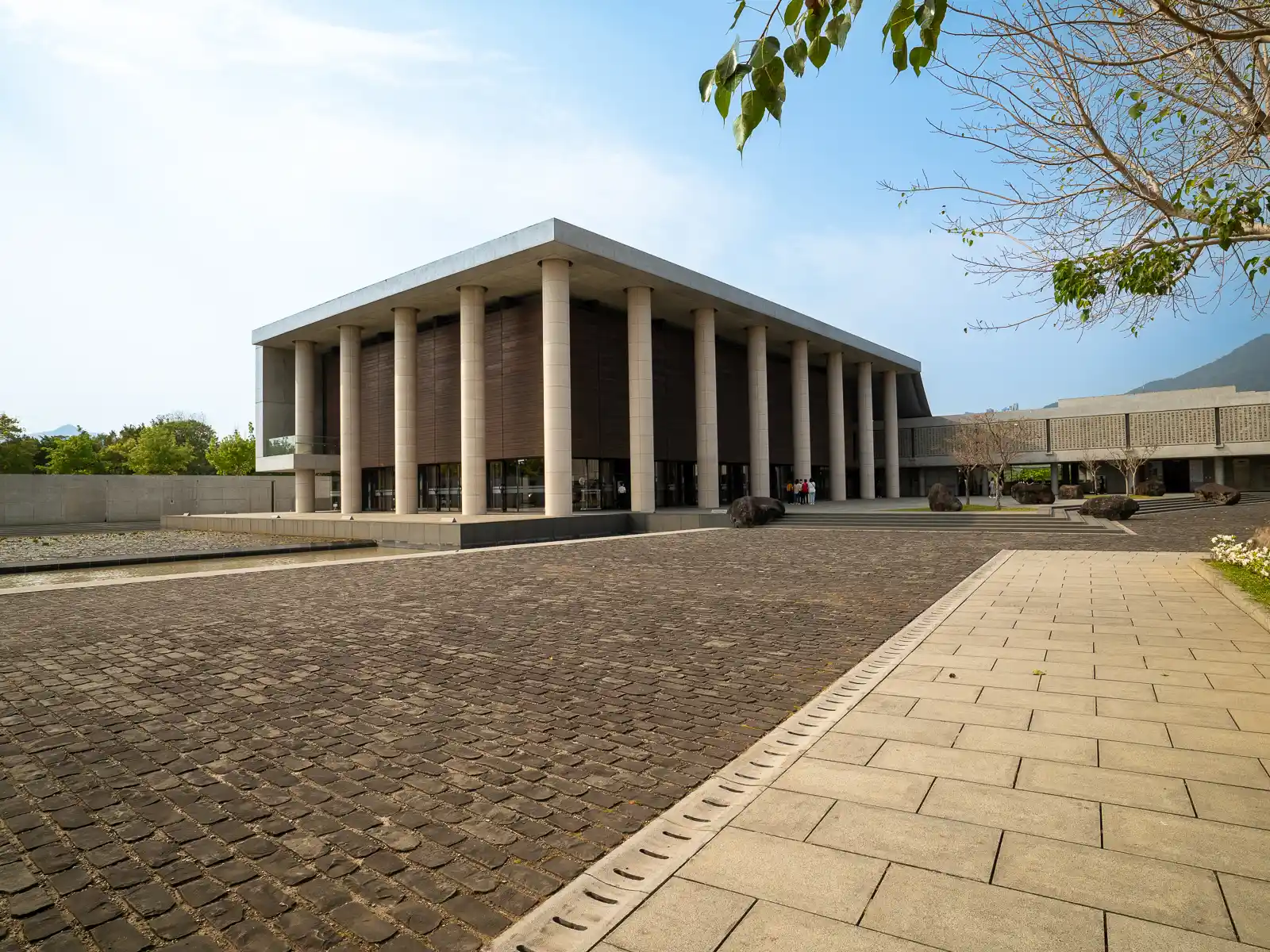
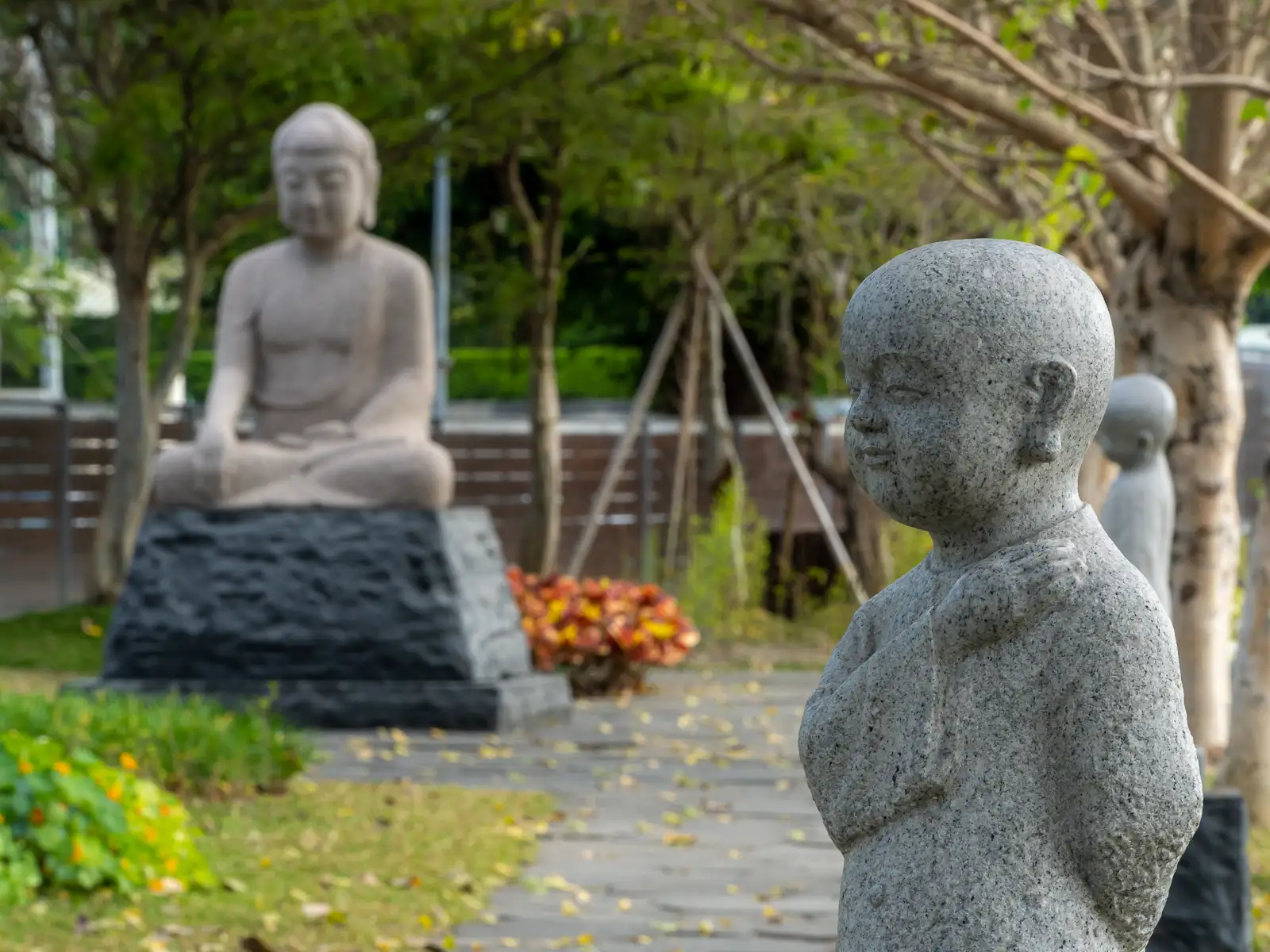

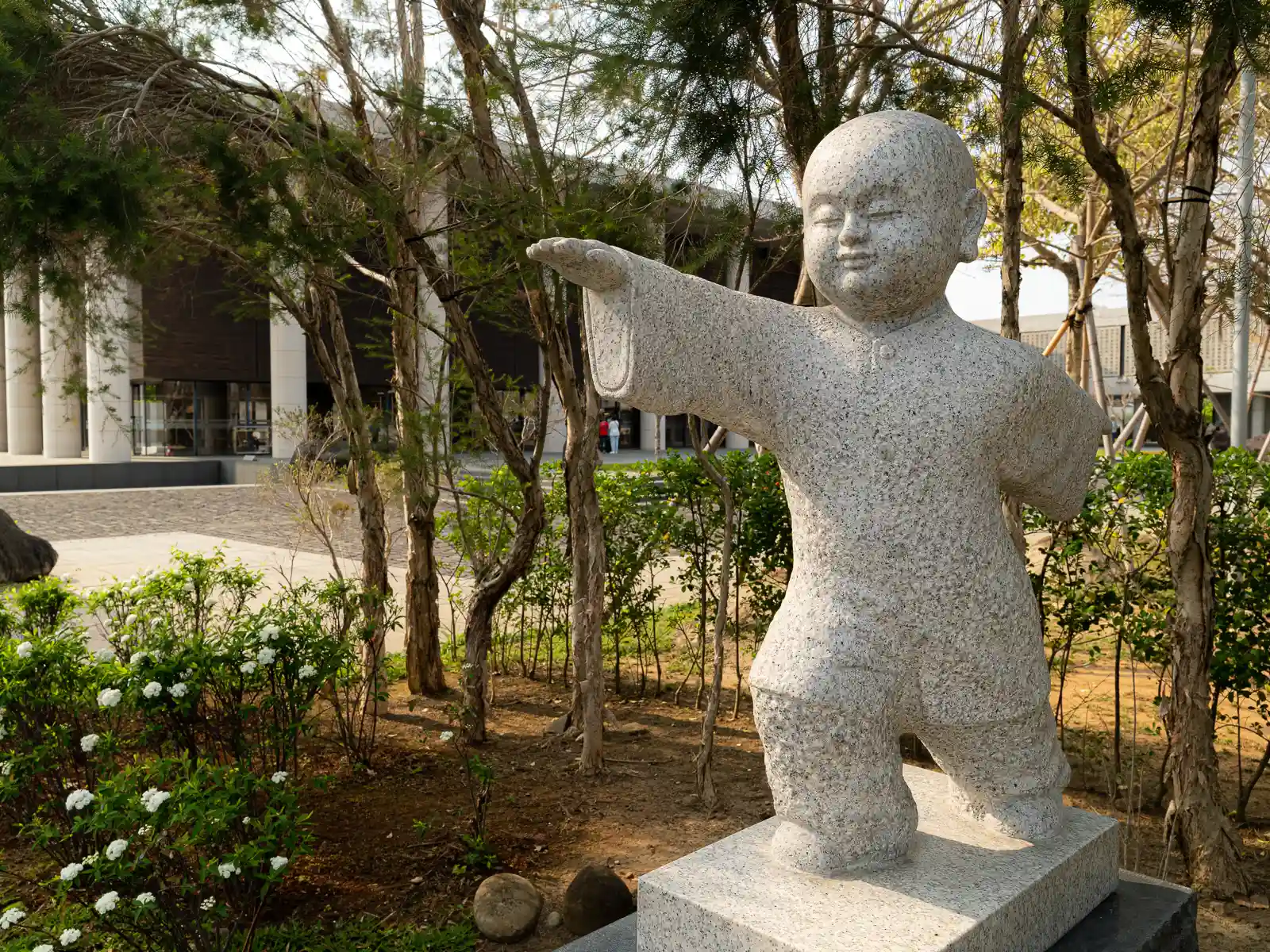
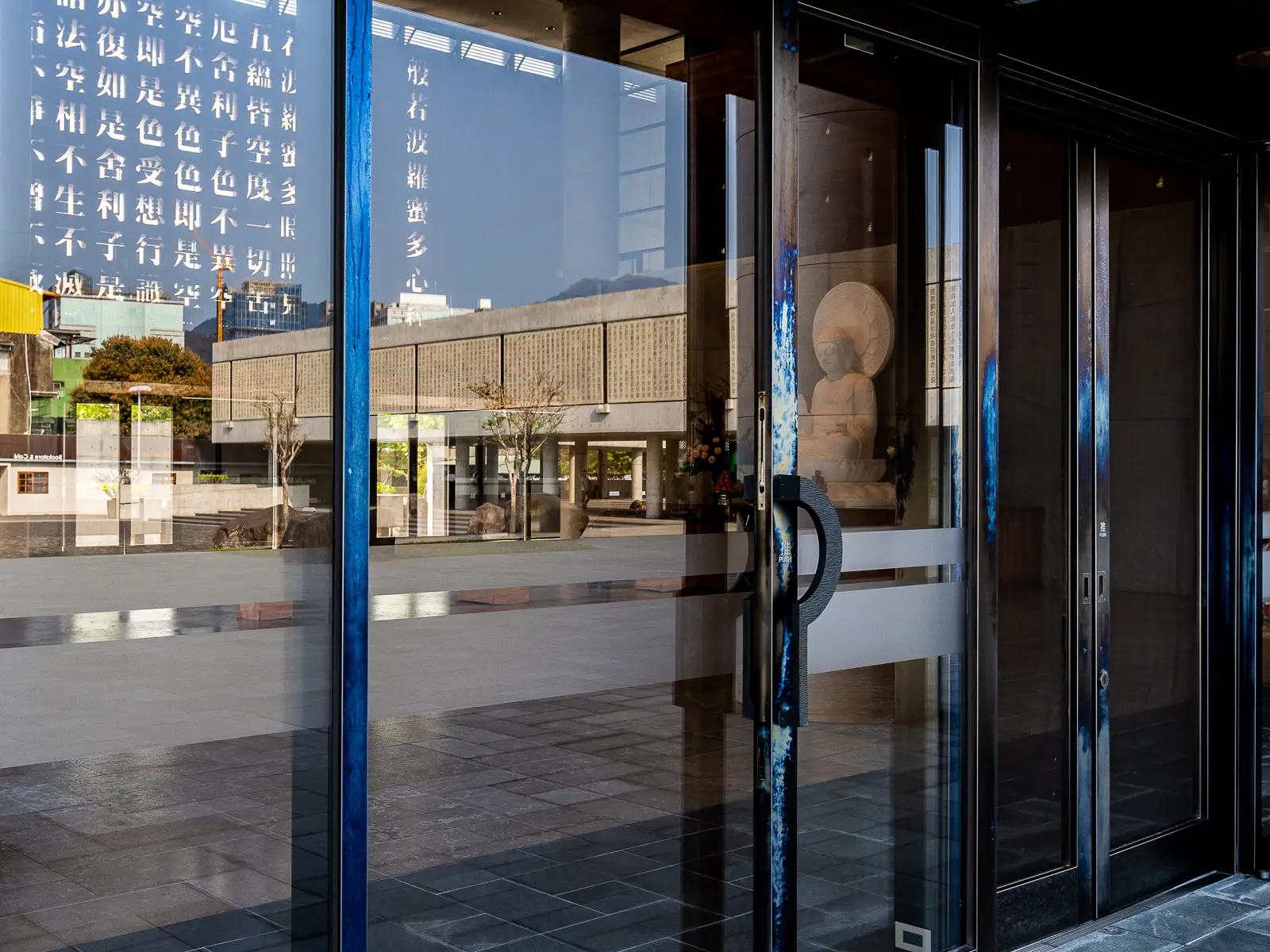
Located in quiet farmland near the Keelung River, the Dharma Drum Mountain Nung Chan Monastery, or “Nung Chan Monastery” for short, is an accessible Buddhist monastery that offers a serene environment very different from the other Taoist temples mentioned in this article. It is also one of our top 5 temples in Taiwan.
Founded in 1975, Nung Chan Monastery has evolved from a simple farmhouse where early monks practiced farming and Buddhism into a modern destination that offers opportunities for meditation, learning about Buddhism, and appreciation of architecture. The monastery’s modern minimalism, characterized by smooth cement walls, reflective pools, large outdoor gardens, and an adjacent colonnade make it easy to mistake for an art gallery.
The Nung Chan Monastery is home to the Water-Moon Dharma Center, which won the 2013 Taiwan Architecture Award for its manifestation of the Buddhist concept of “dharma” through architectural techniques. Designed by renowned Taiwanese architect Kris Yao, the minimalist structure combines light, shadow, water and reflected image to juxtapose the real with the illusory, bringing to mind the Buddhist idea that “perception is illusory”.
Particularly amazing is the hollowed-out lattice design of the west wall, which is engraved with the text of the Heart Sutra. When the sun sets, it shines through the shapes of the characters.
Zhulin Mountain Buddhist Temple
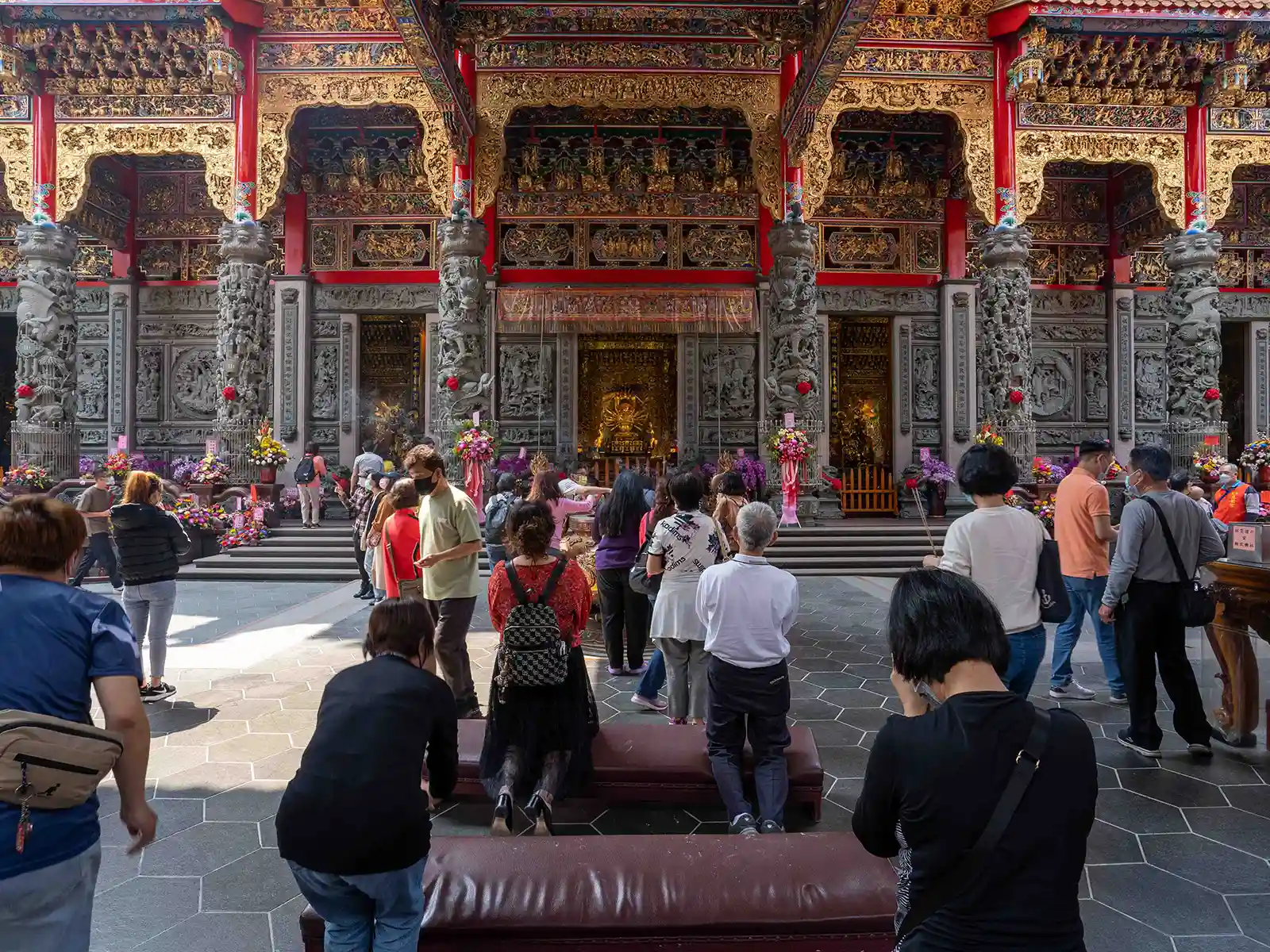
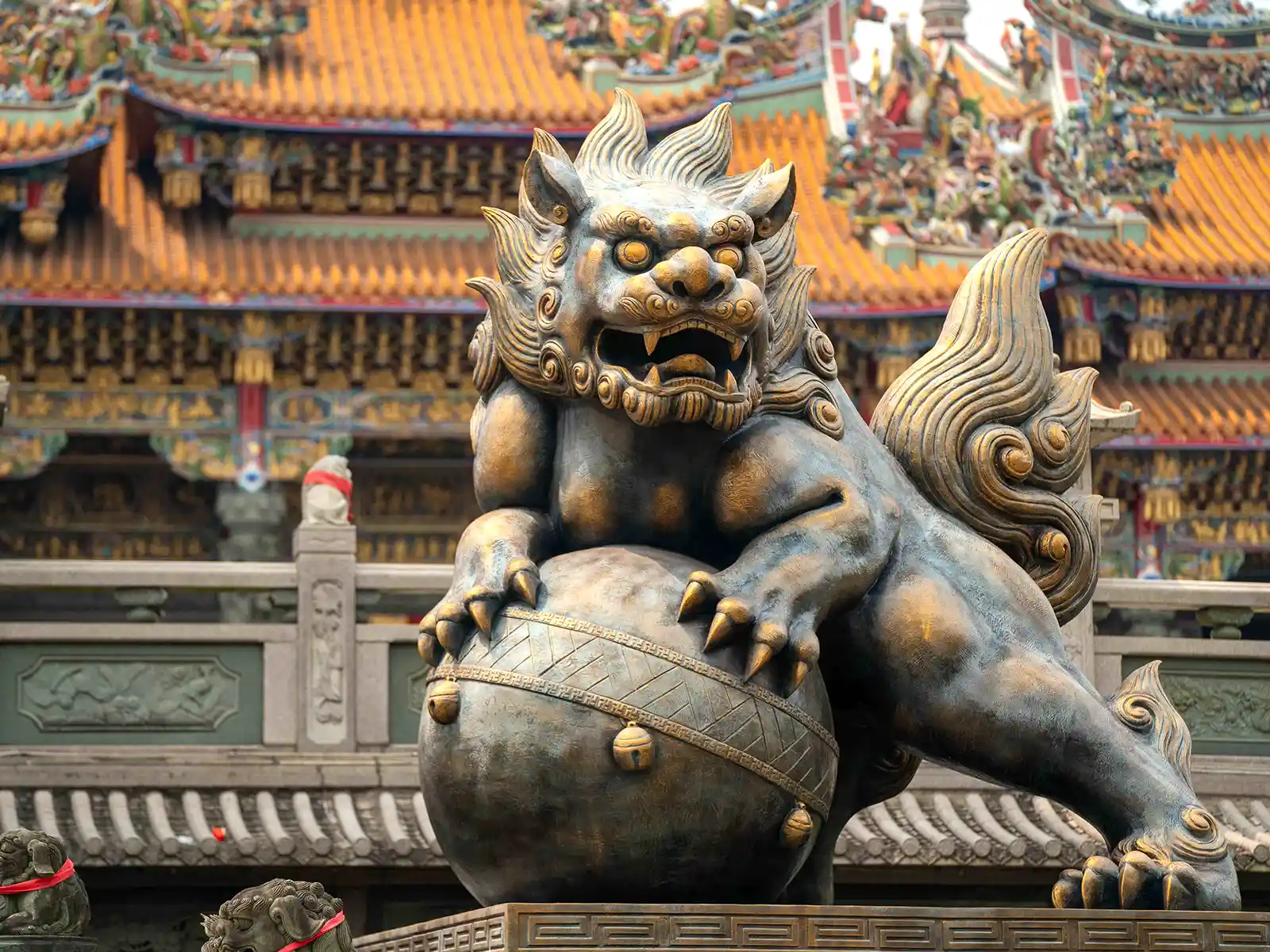
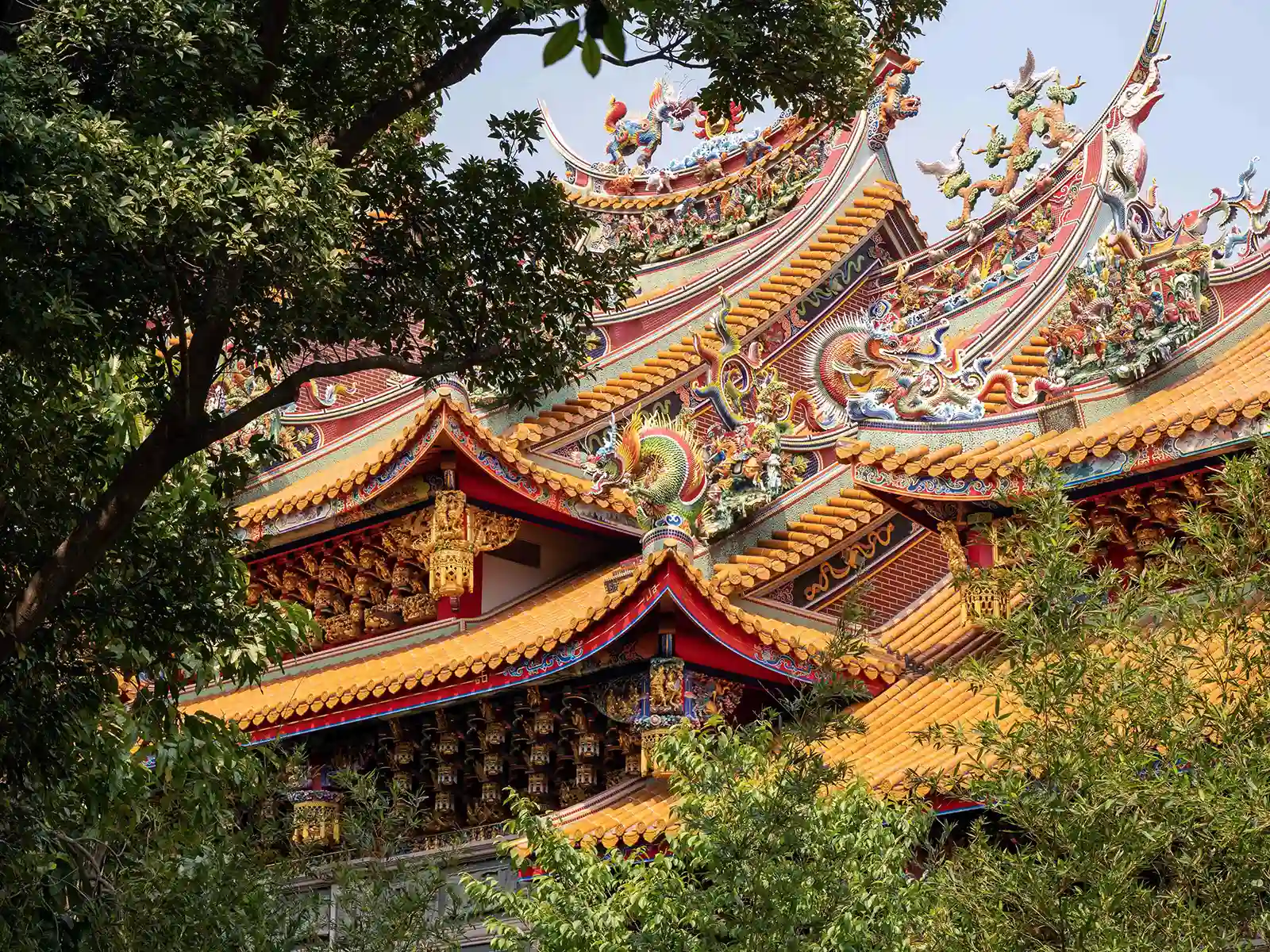
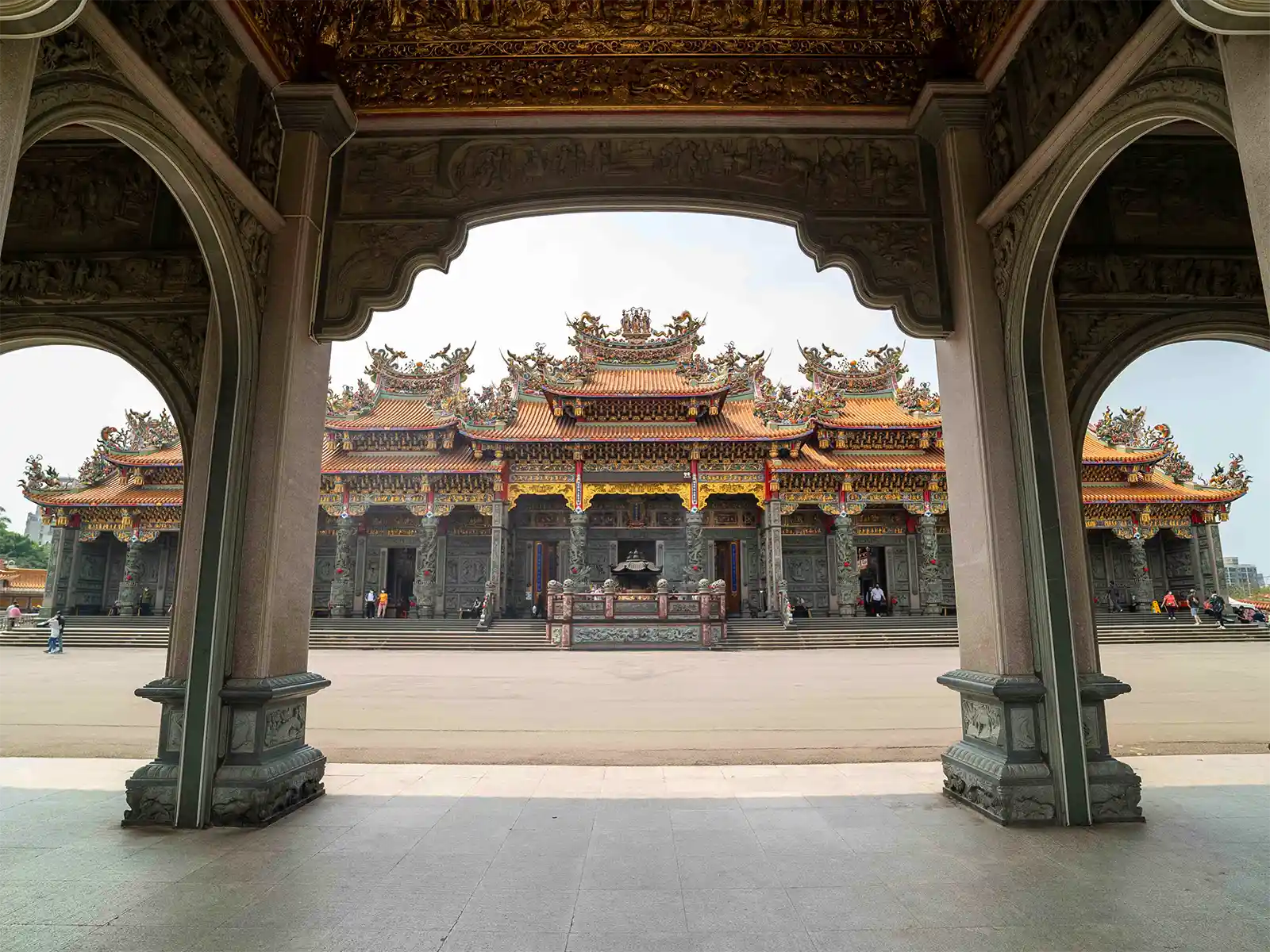
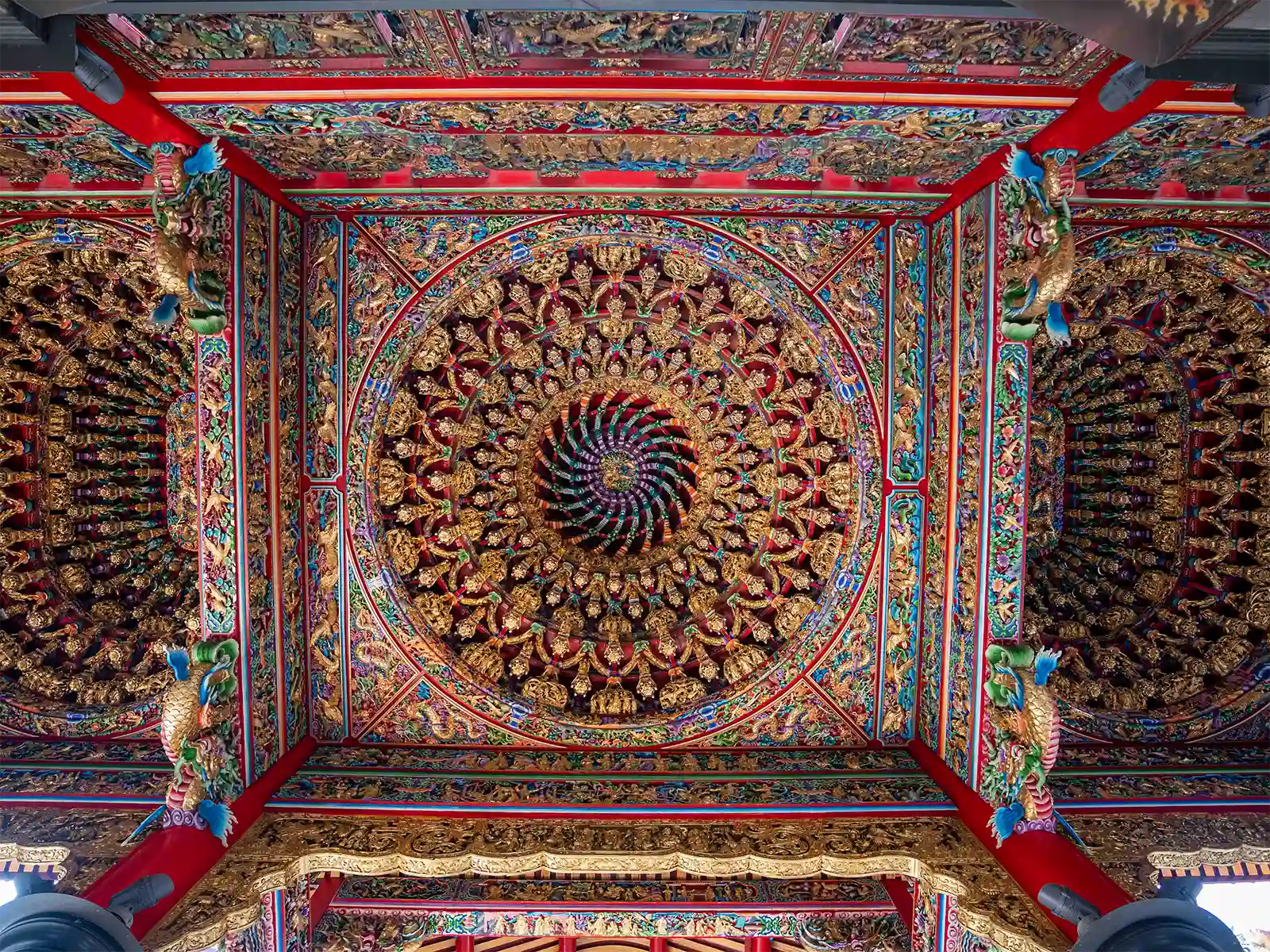
Zhulin Mountain Buddhist Temple, also known as Linkou Guanyin Temple, is the largest and most magnificent temple on this list. Its history dates back to 1801, and throughout history, it remained a small and simple temple until a grand restoration project was implemented in the year 2000. Spanning a period of 12 years and costing 2 billion NTD (equivalent to 65 million USD), this ambitious project culminated in the creation of a new palace-like temple complex covering an expansive 66,000 square meters (approximately 16.3 acres).
Following its reopening, Zhulin Mountain Buddhist Temple has earned recognition as one of the most opulent and ornate temples in all of Taiwan. For those unable to journey south to visit the Luerman Mazu Temple in Tainan or the Fo Guang Shan Monastery in Kaohsiung, a visit to this temple in Linkou is certainly worthwhile.
The temple is home to one of three Guanyin statues that were brought over from the original Longshan Temple in China. Its embellishments include intricately carved stone dragon pillars, wooden sculptures, and finely detailed animal reliefs. Materials used in its construction include fragrant Taiwanese cypress and camphor.
Deep within the temple, the exquisitely adorned main hall venerates multiple deities, featuring a towering statue of Eighteen-Armed Guanyin, alongside the Earth God, Mazu, and others. The palace also hosts several shrines dedicated to various gods and figures. Notably, the second floor contains a shrine devoted to Confucius, a prominent figure in Taiwanese society. Zhulin Mountain Buddhist Temple is a testament to both spiritual devotion and architectural grandeur.
Hongludi Nanshan Fude Temple
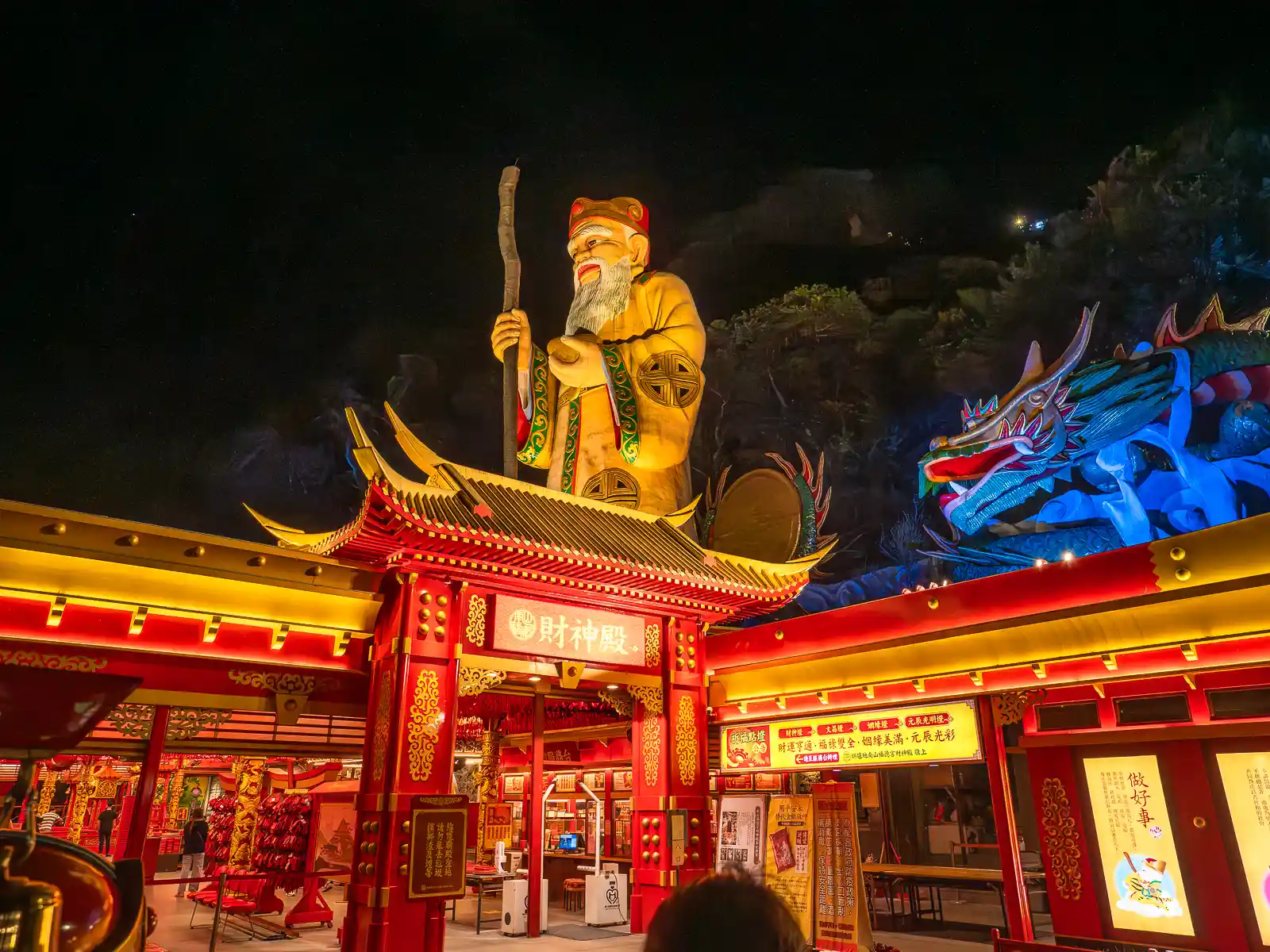
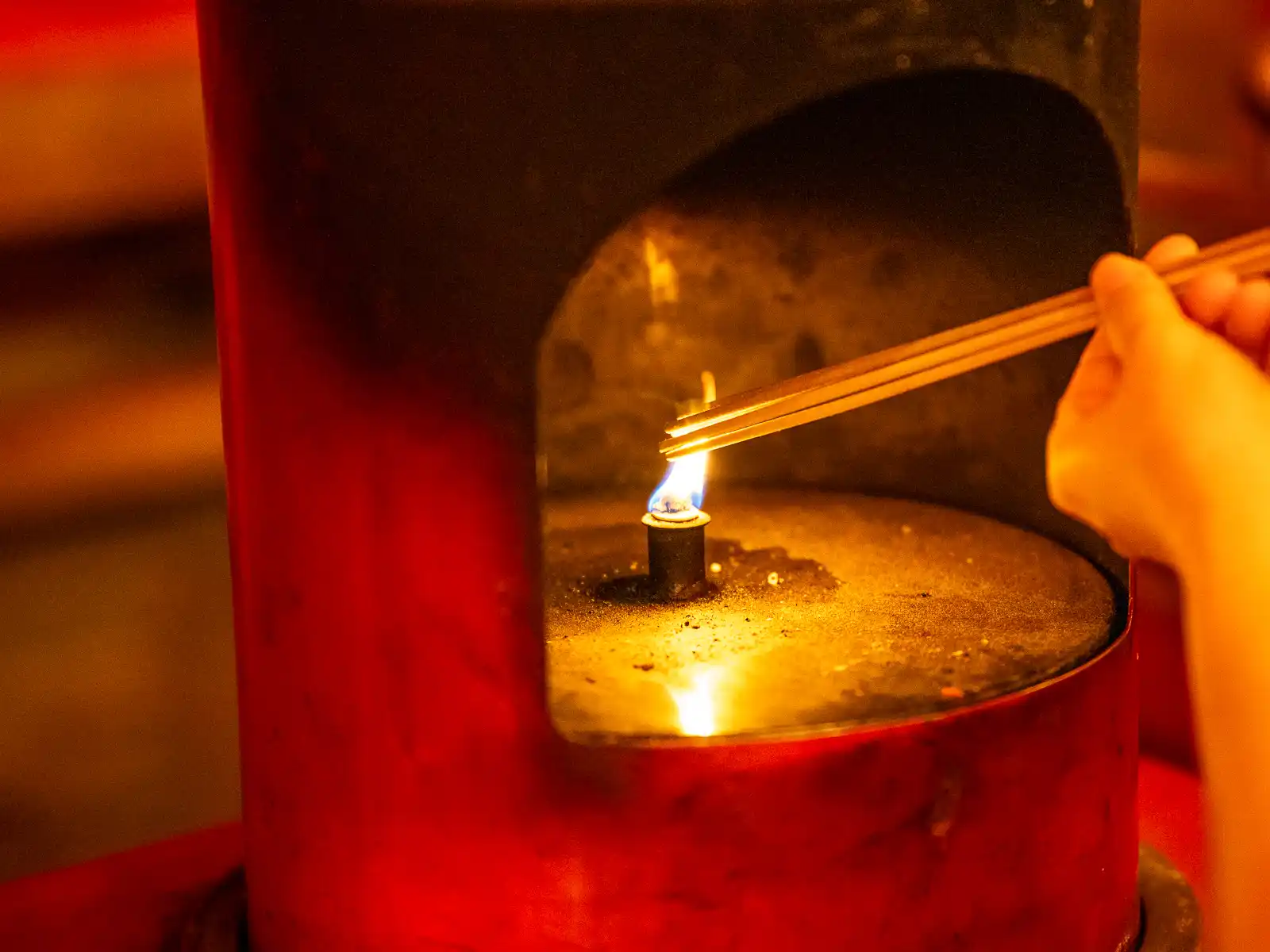
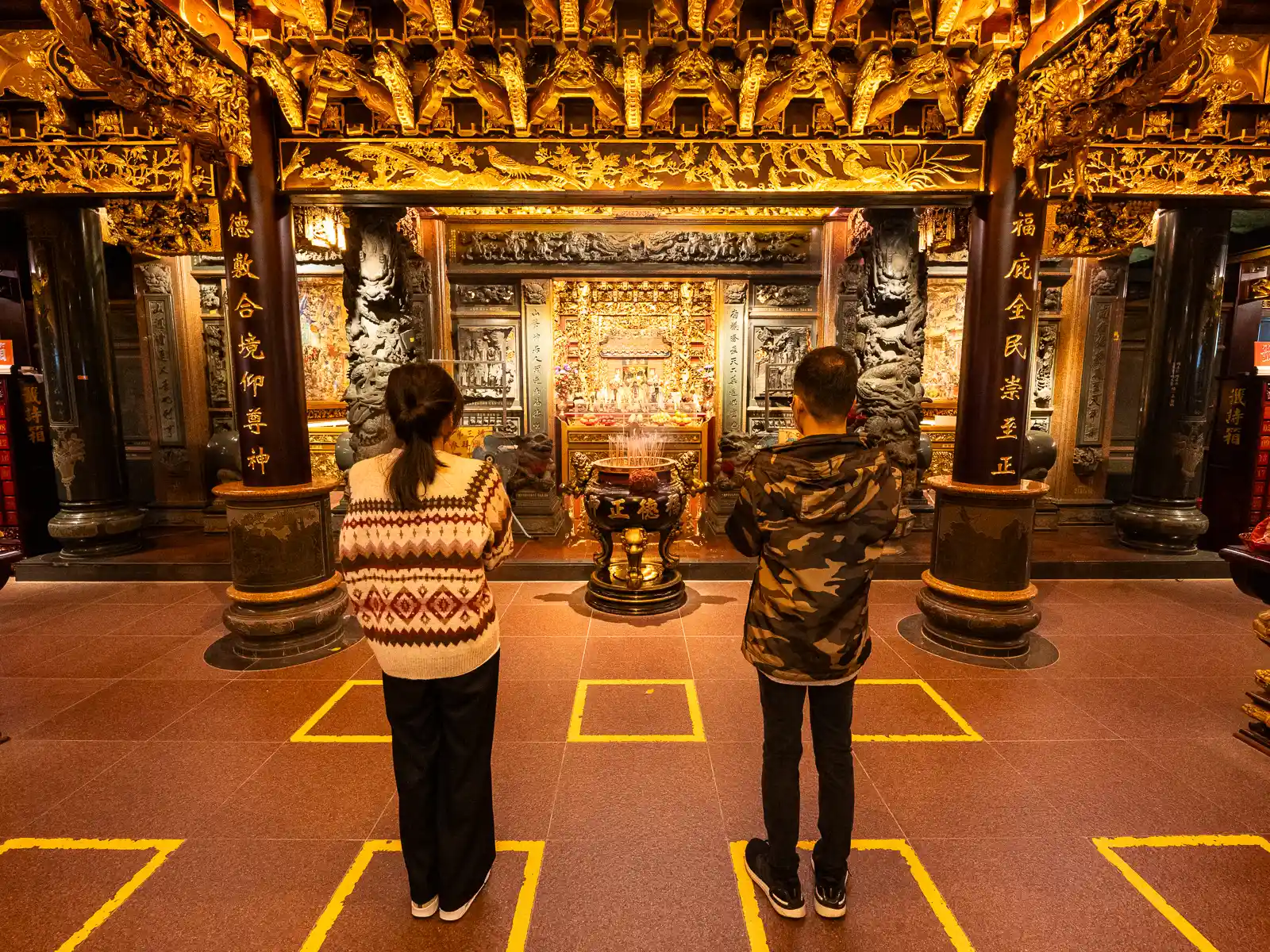
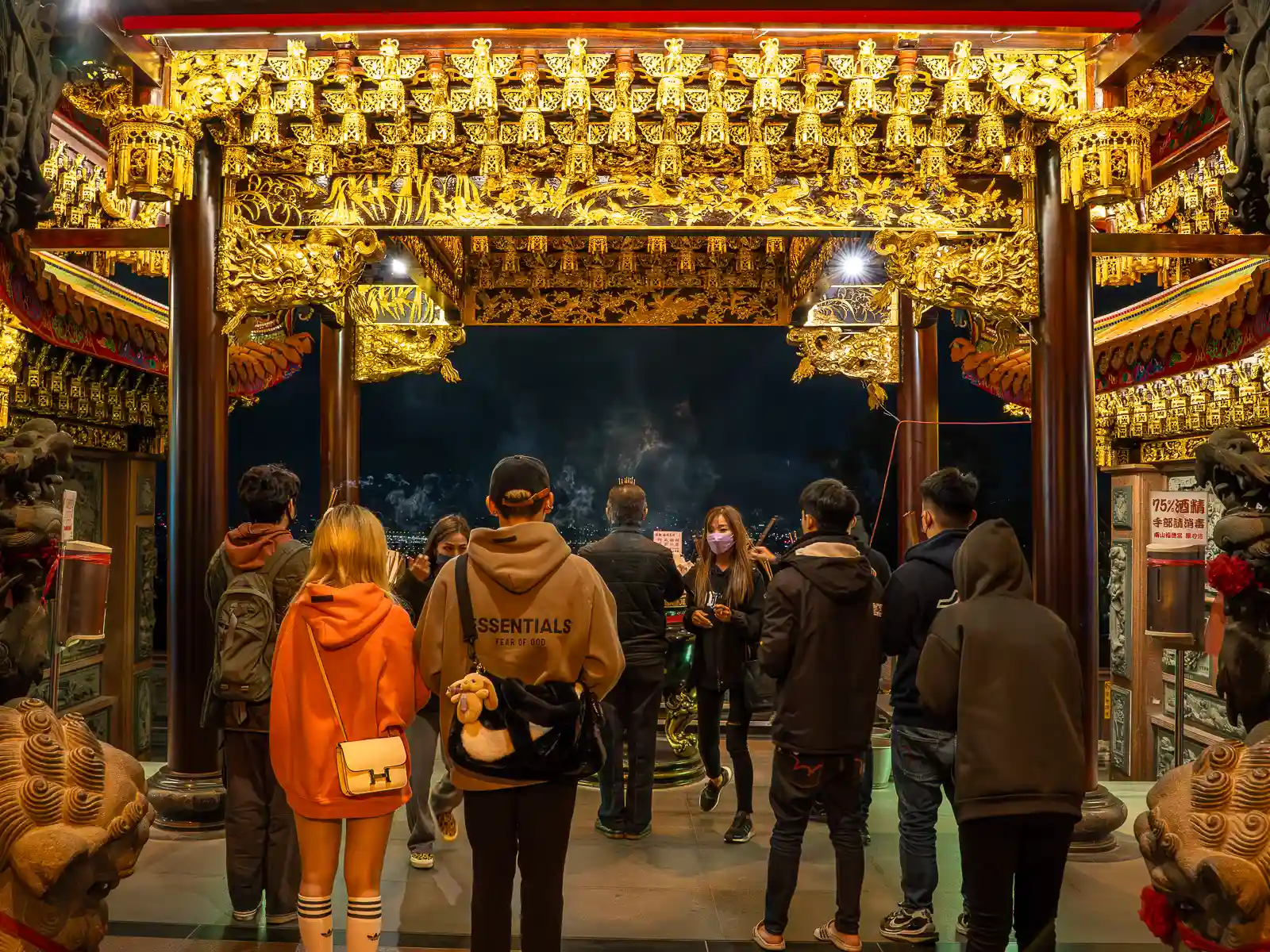
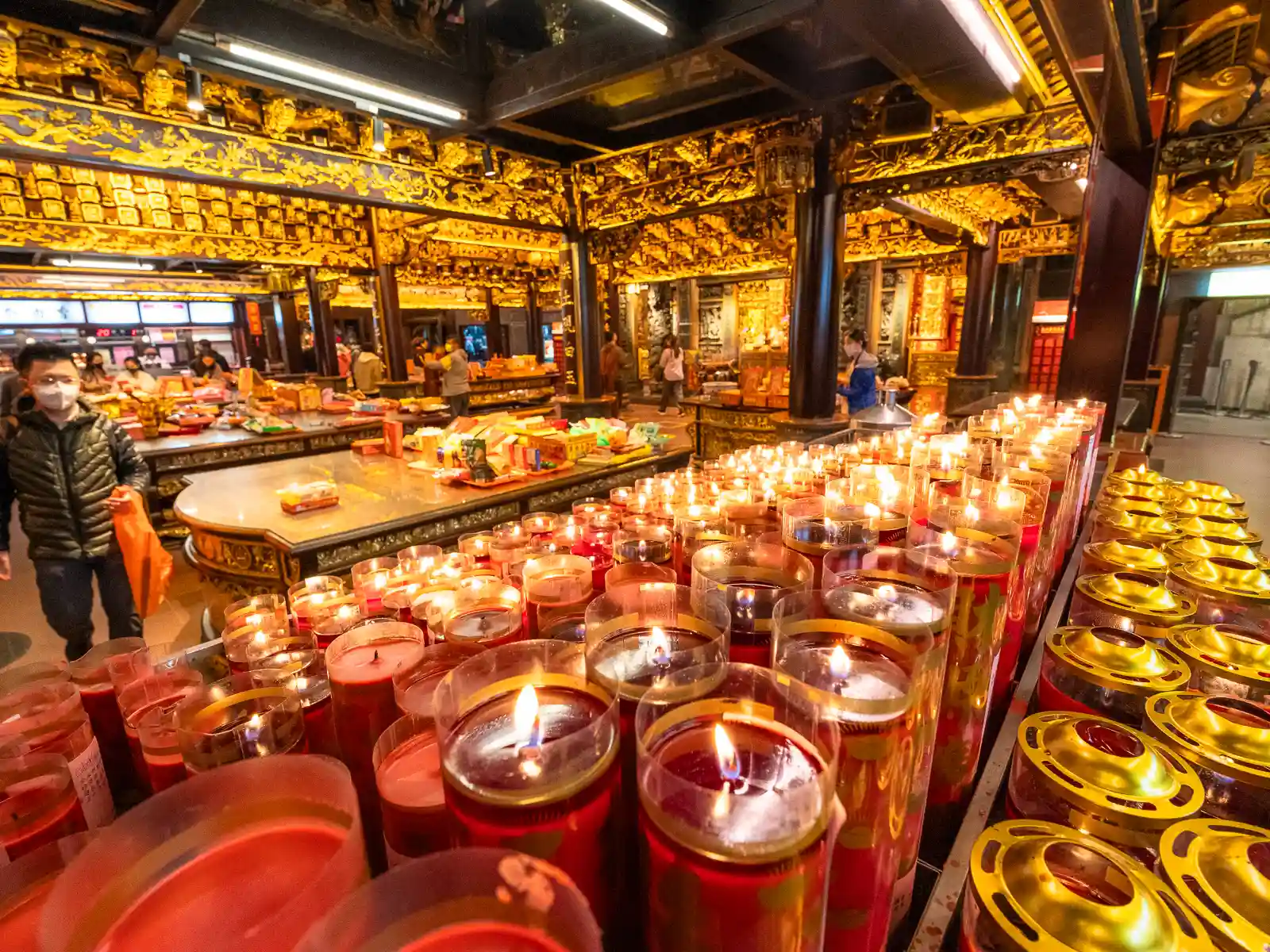
The Zhonghe Hongludi Temple, situated atop a peak in the southern foothills of Taipei, is home to the largest Earth God in Northern Taiwan. This temple is renowned not only for its striking night vistas of Taipei but also for its iconic Earth God statue.
Initially constructed to safeguard the surrounding neighborhoods, the temple has transformed into a tourist attraction offering the promise of financial blessings and captivating nighttime panoramas.
At the heart of the temple stands a golden ingot cradled by the Earth God, believed to bestow good fortune upon those who make contact with it. Over the years, the ingot has acquired an exceptionally luminous sheen, a testament to the countless aspirations for prosperity that it has garnered.
Insider’s Tip: While daytime visits offer a glimpse into the temple’s architectural beauty and cultural significance, consider staying till evening. The nighttime panoramas of Taipei from this vantage point are truly something to behold!

